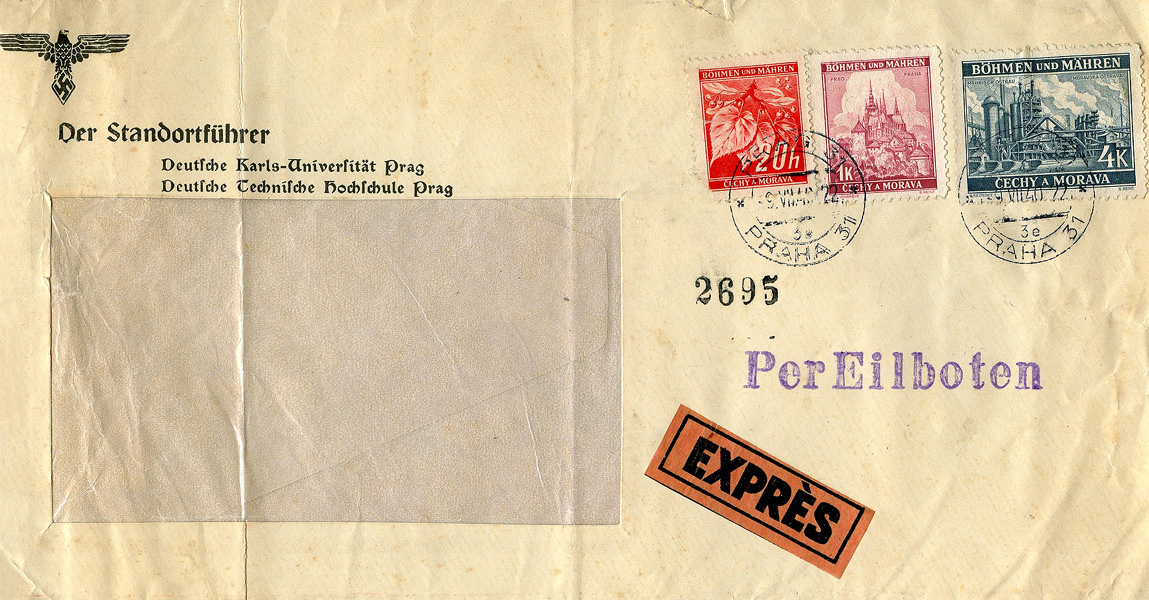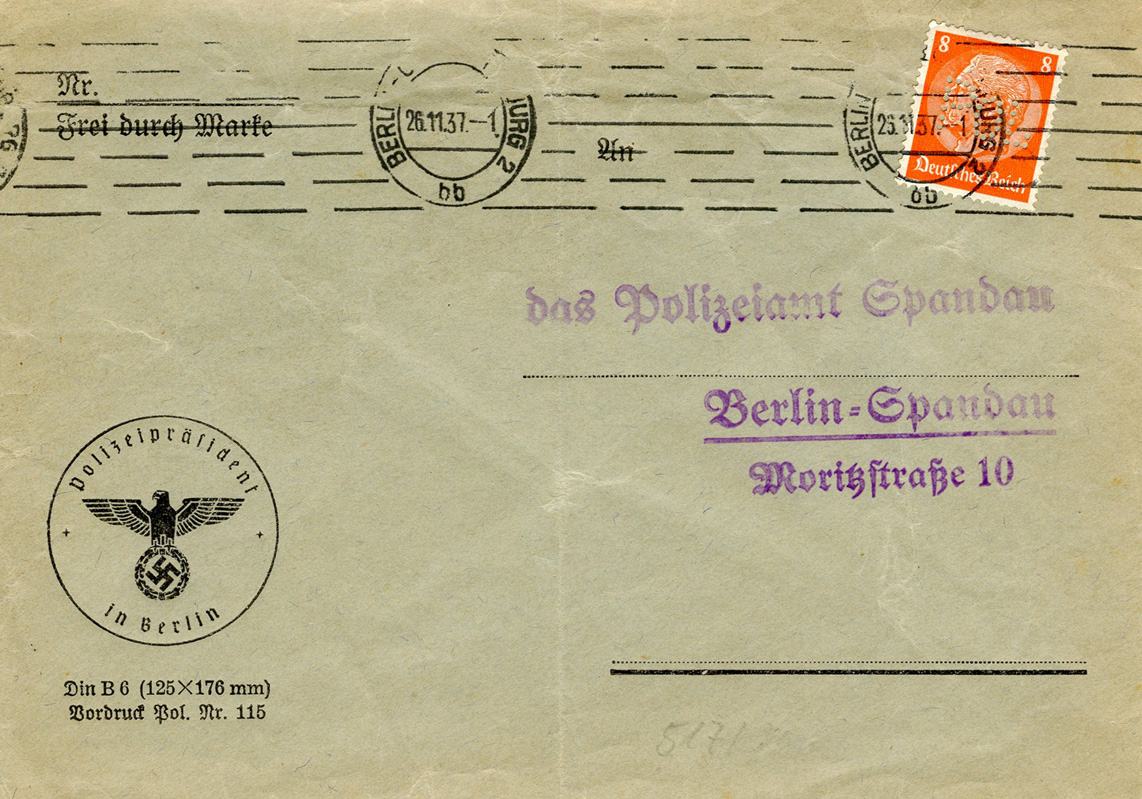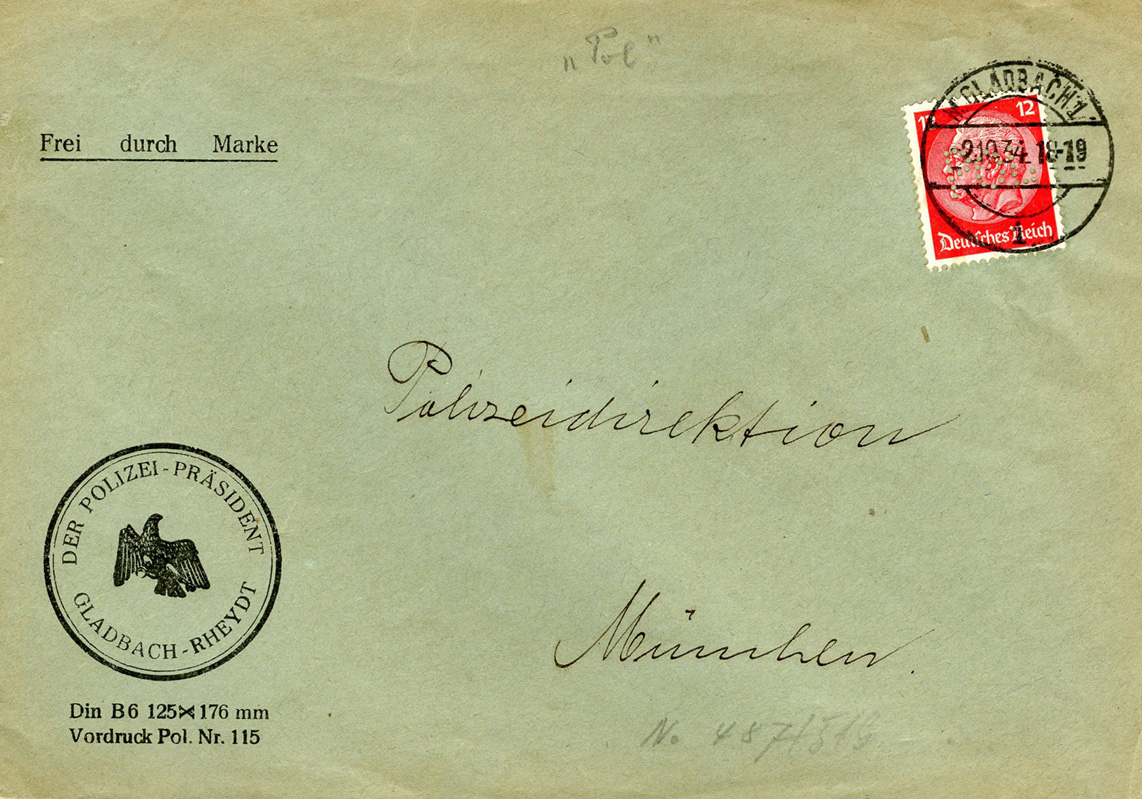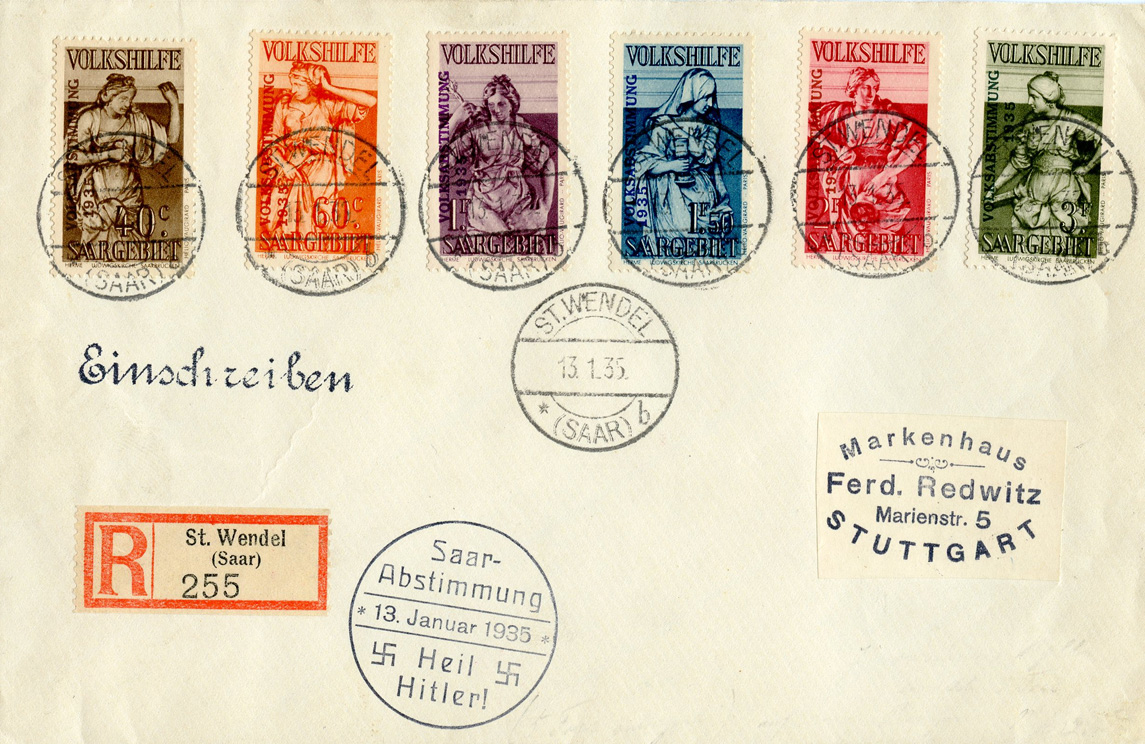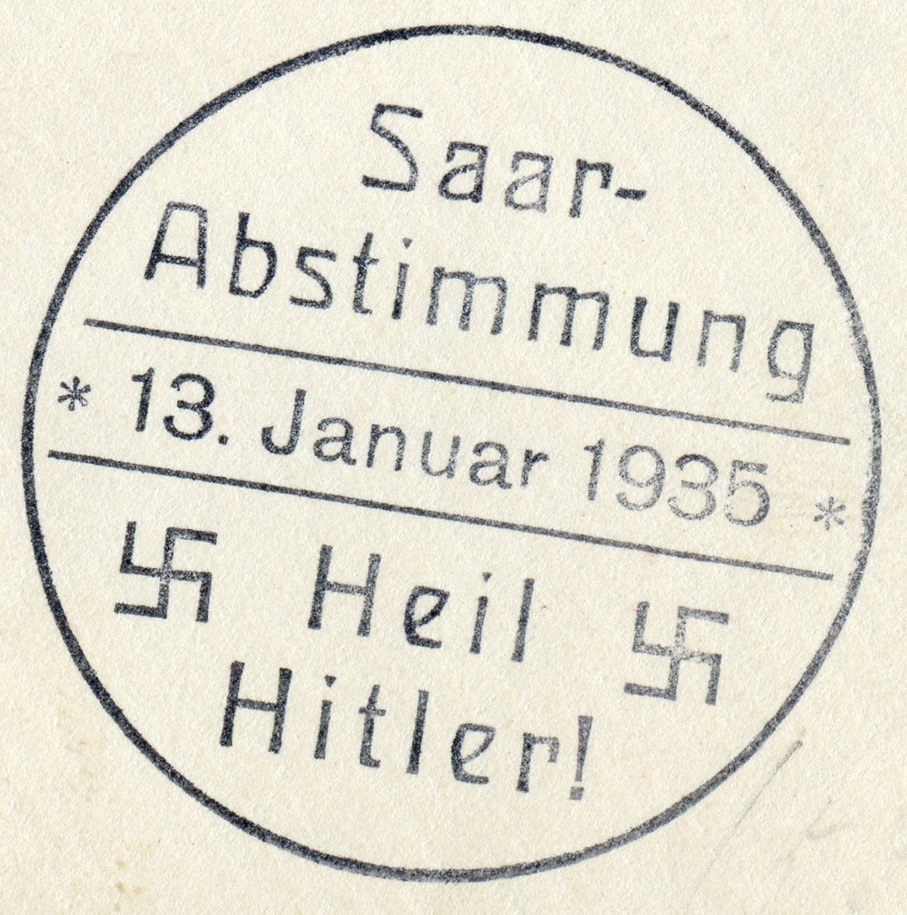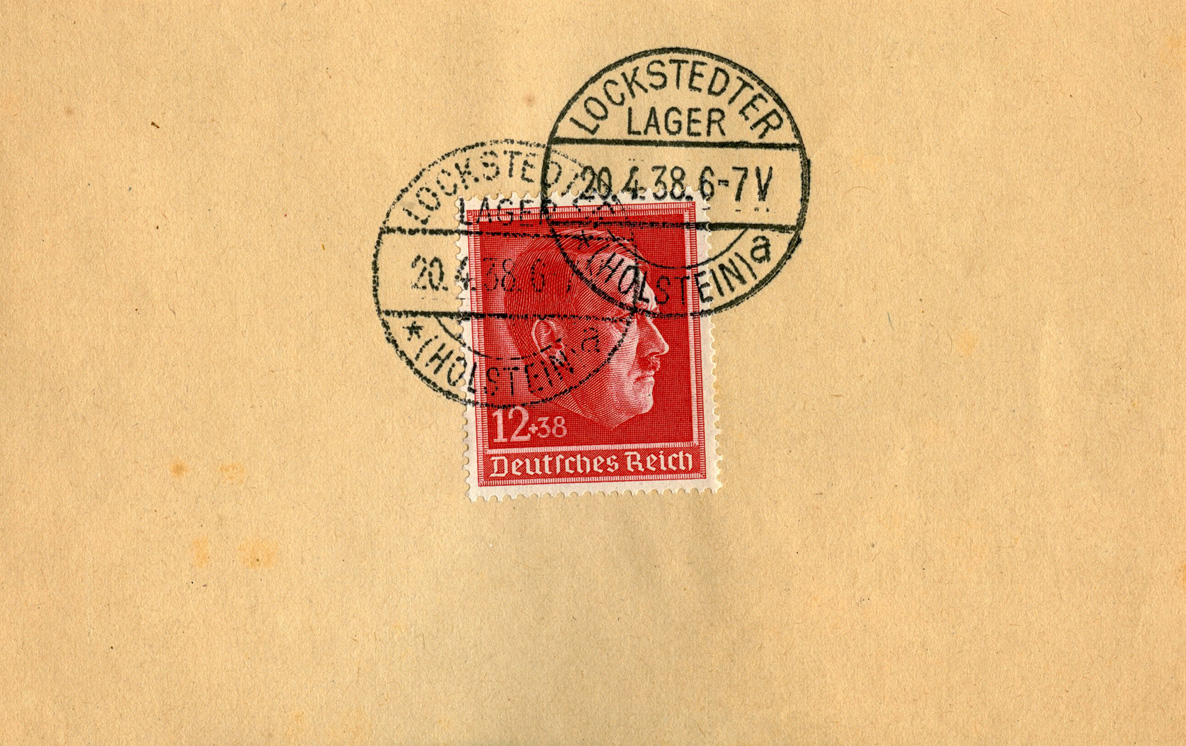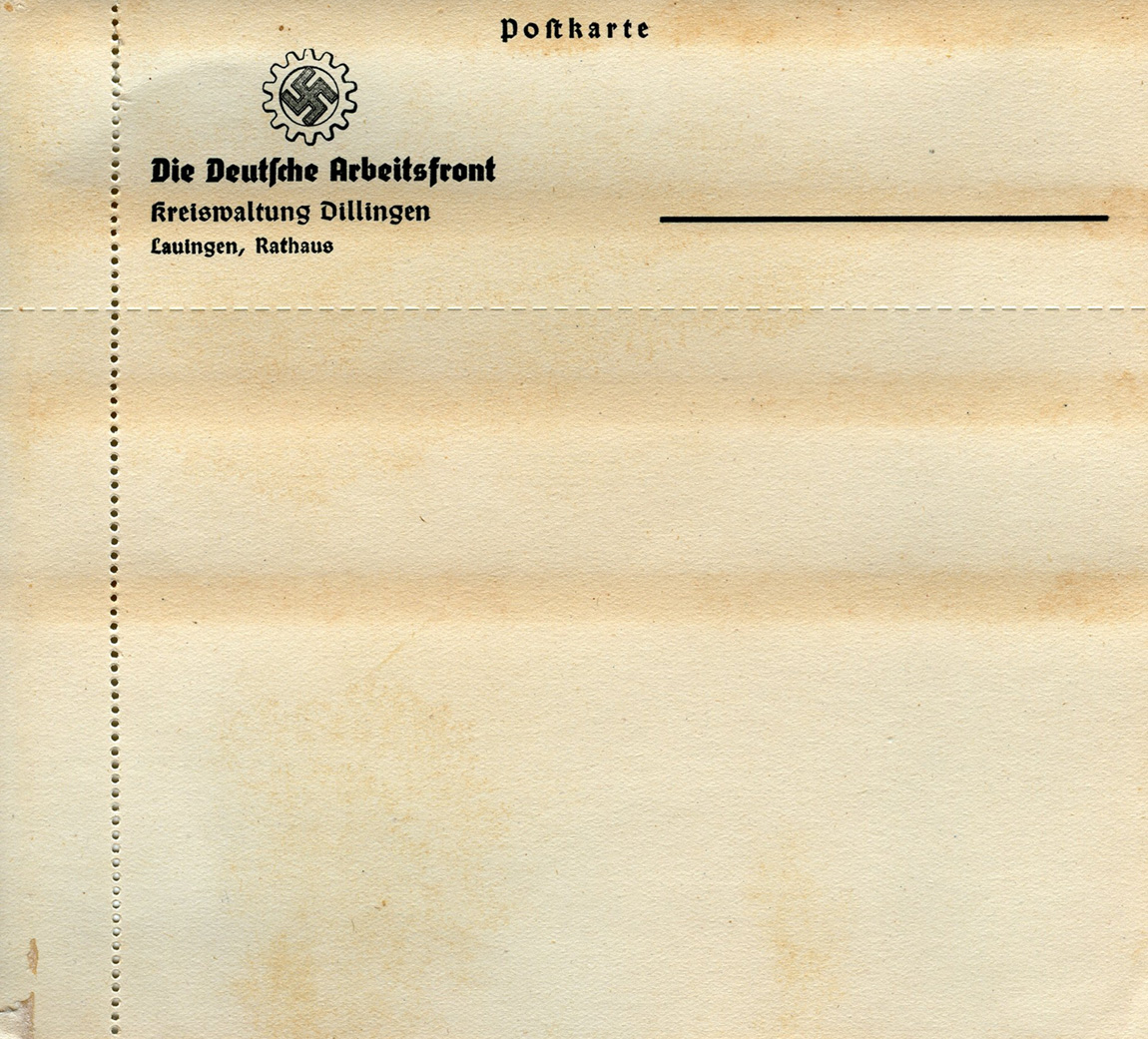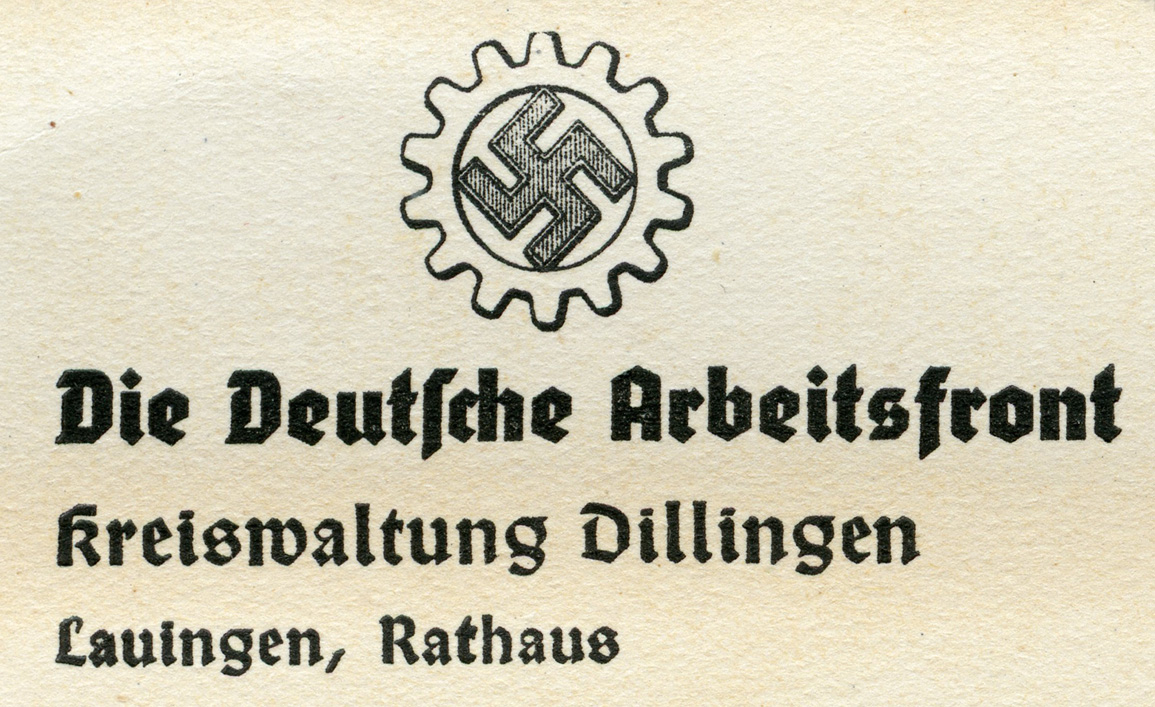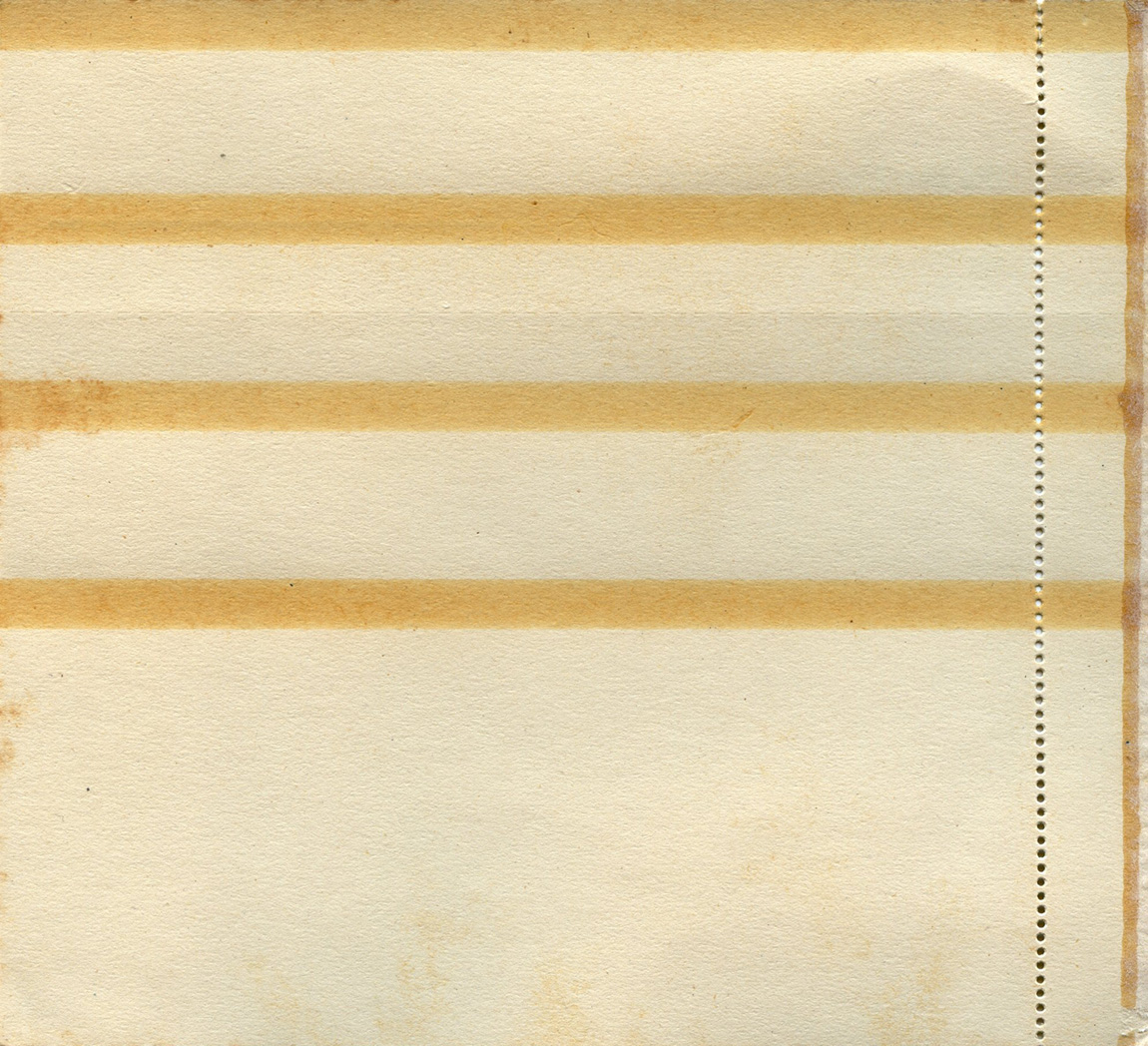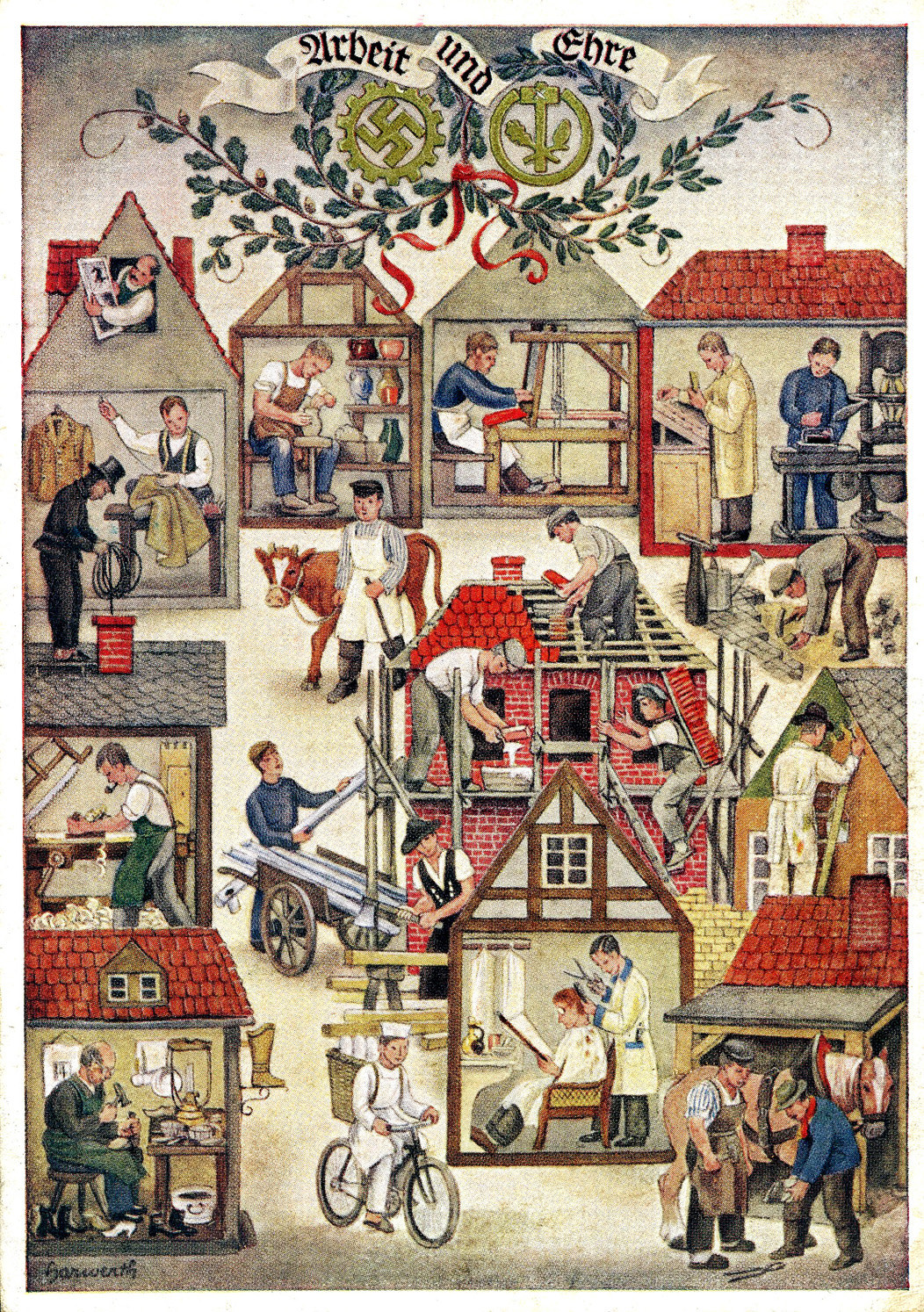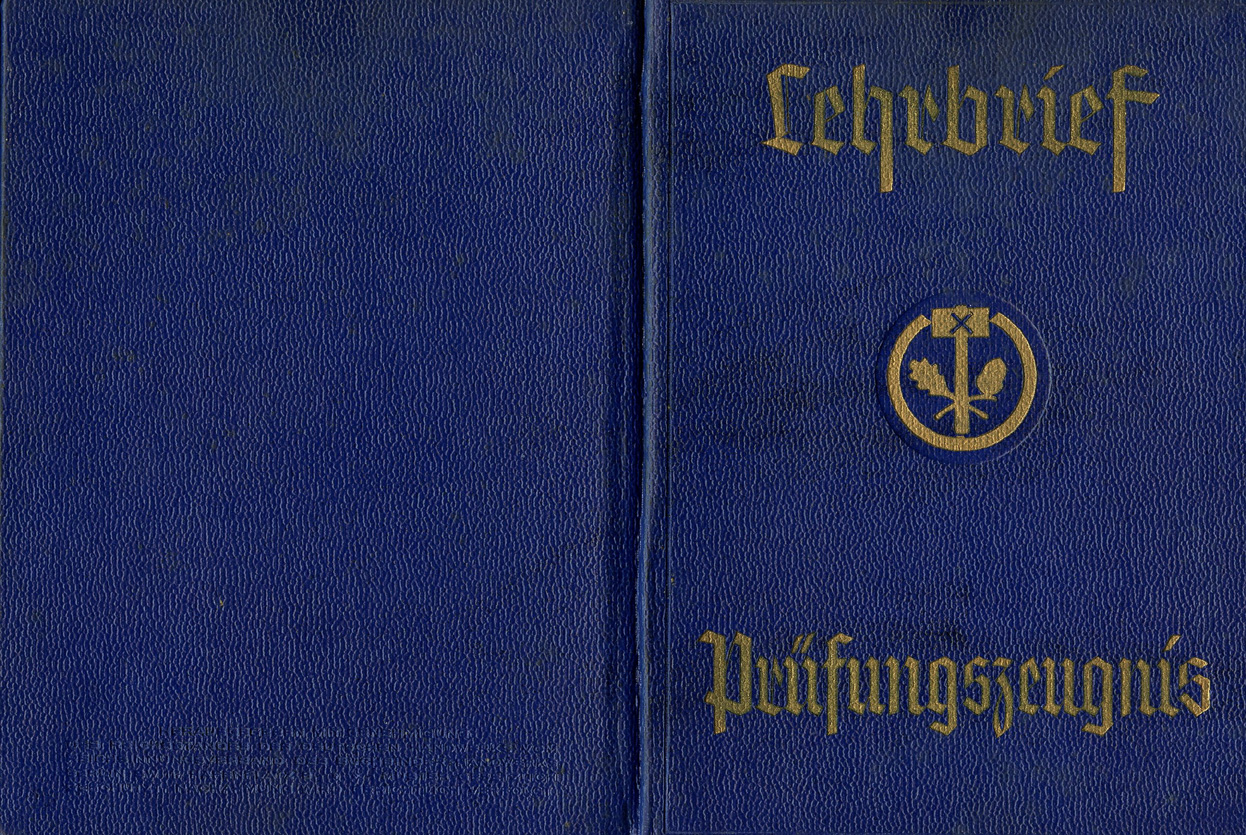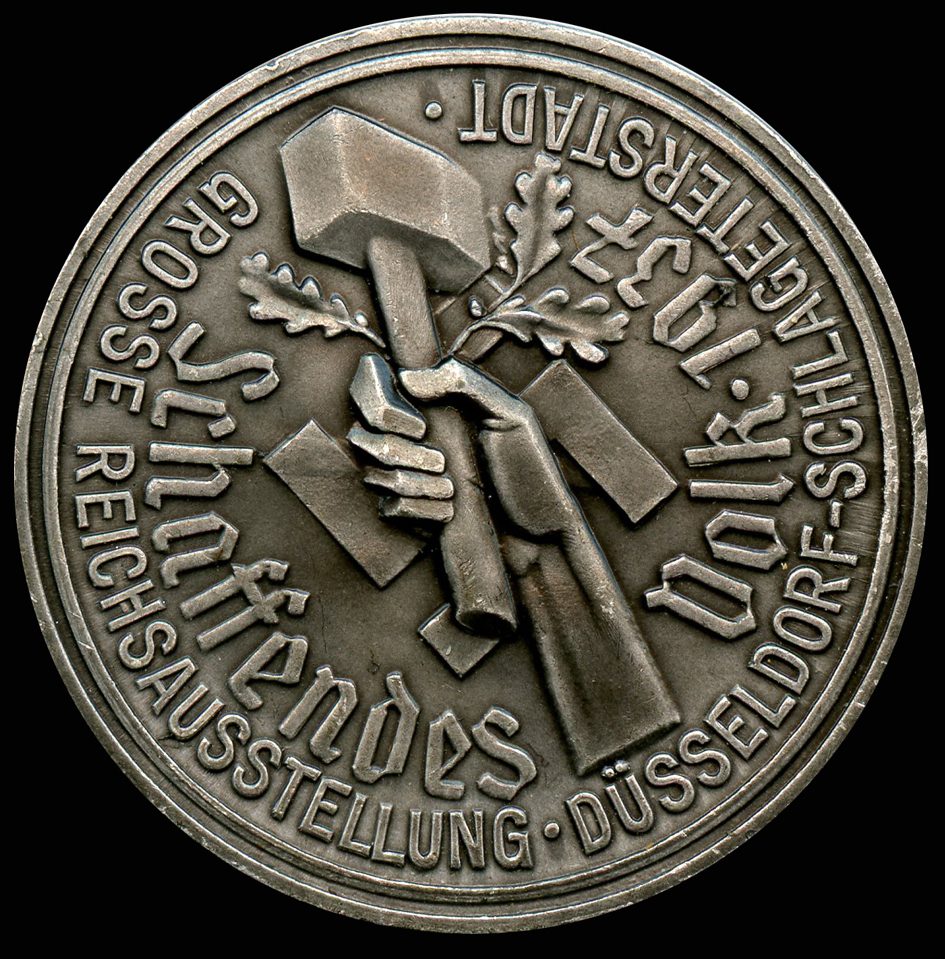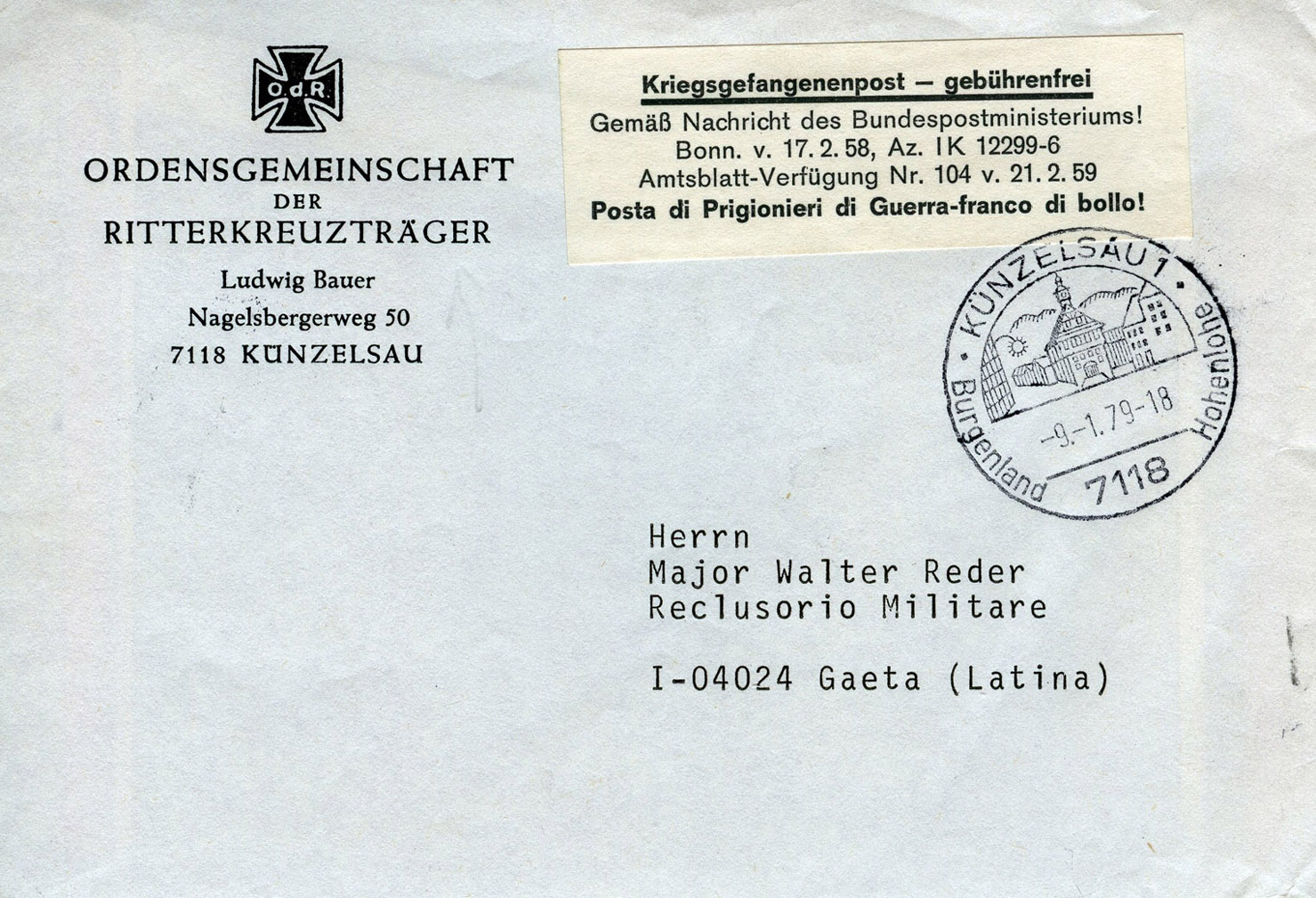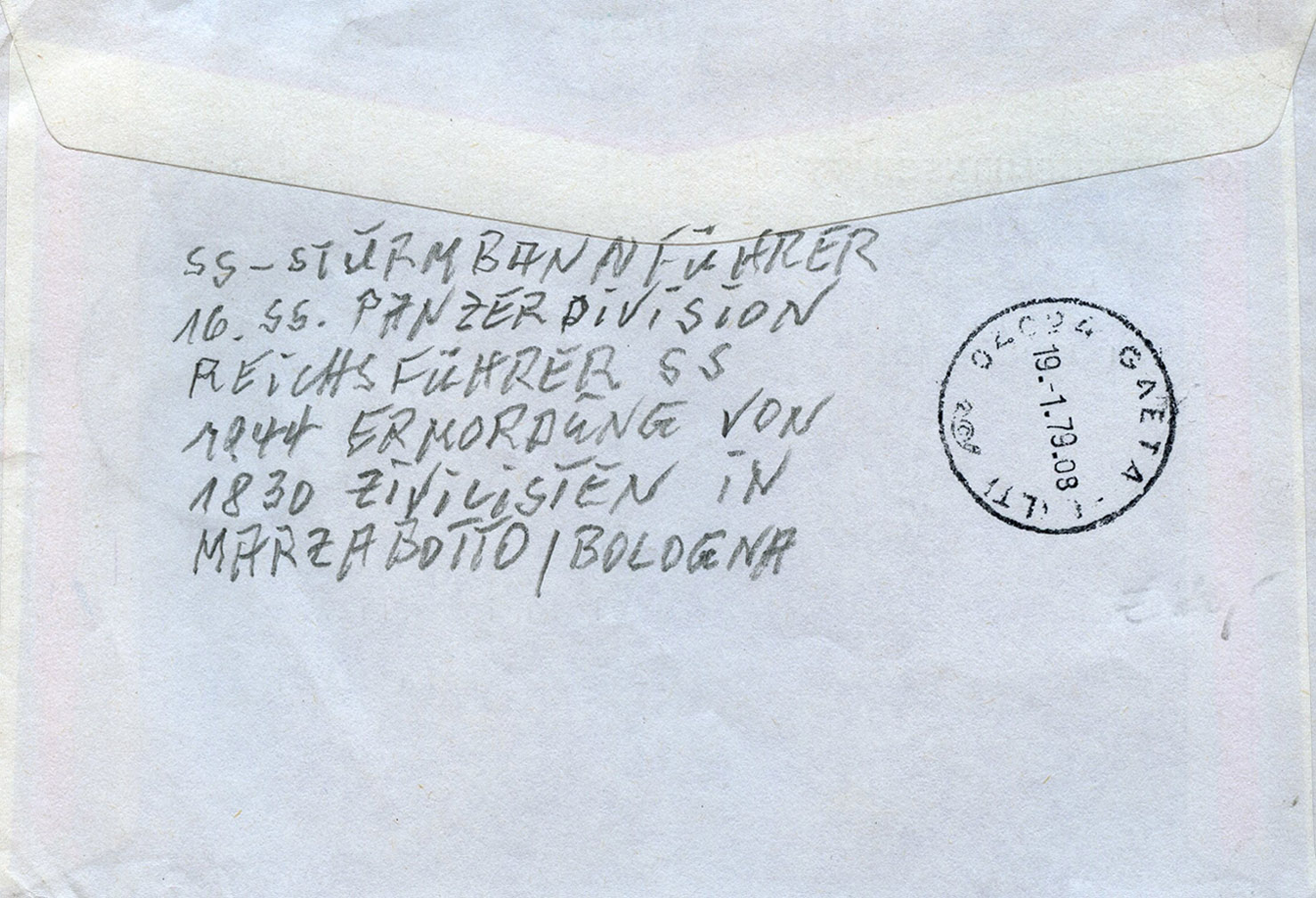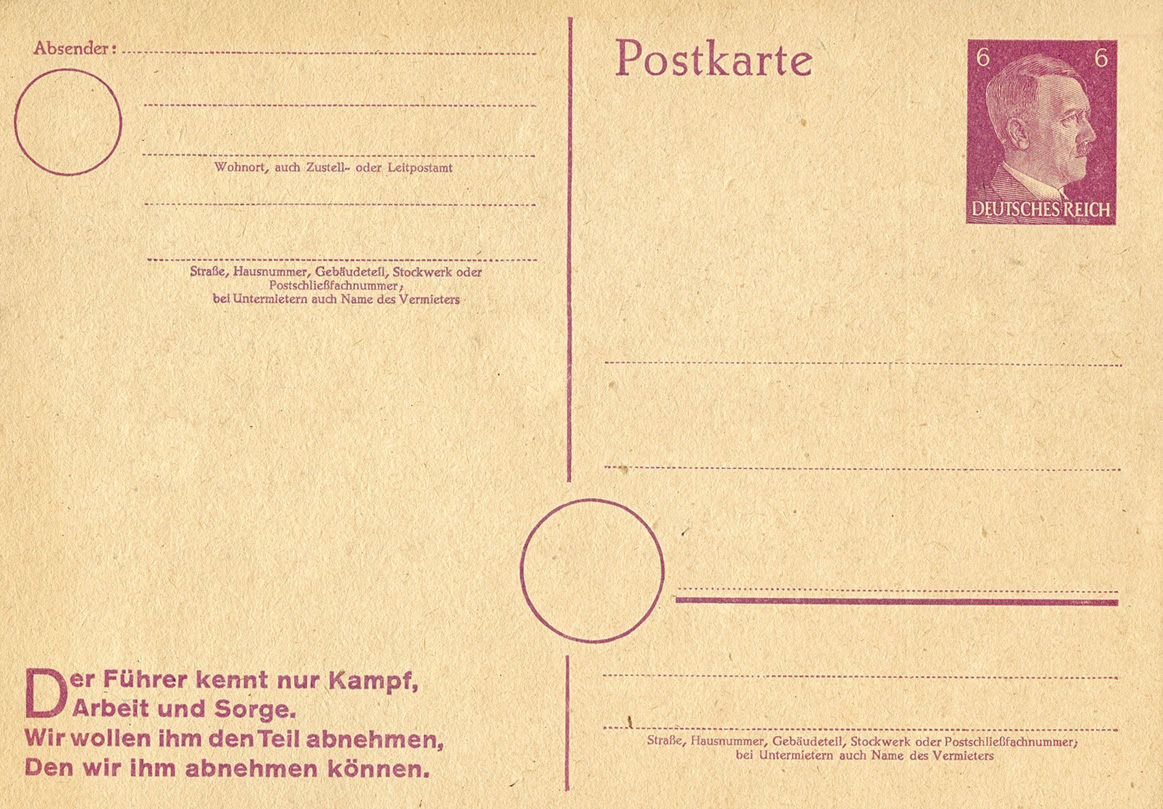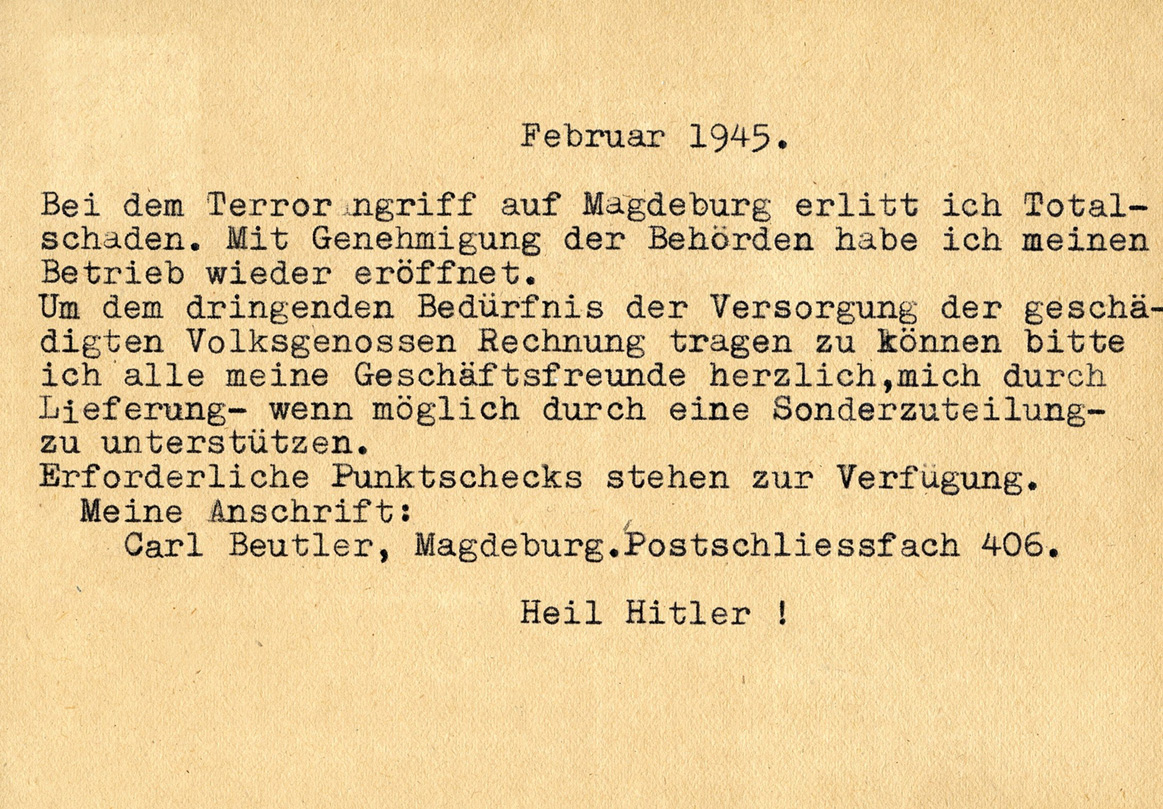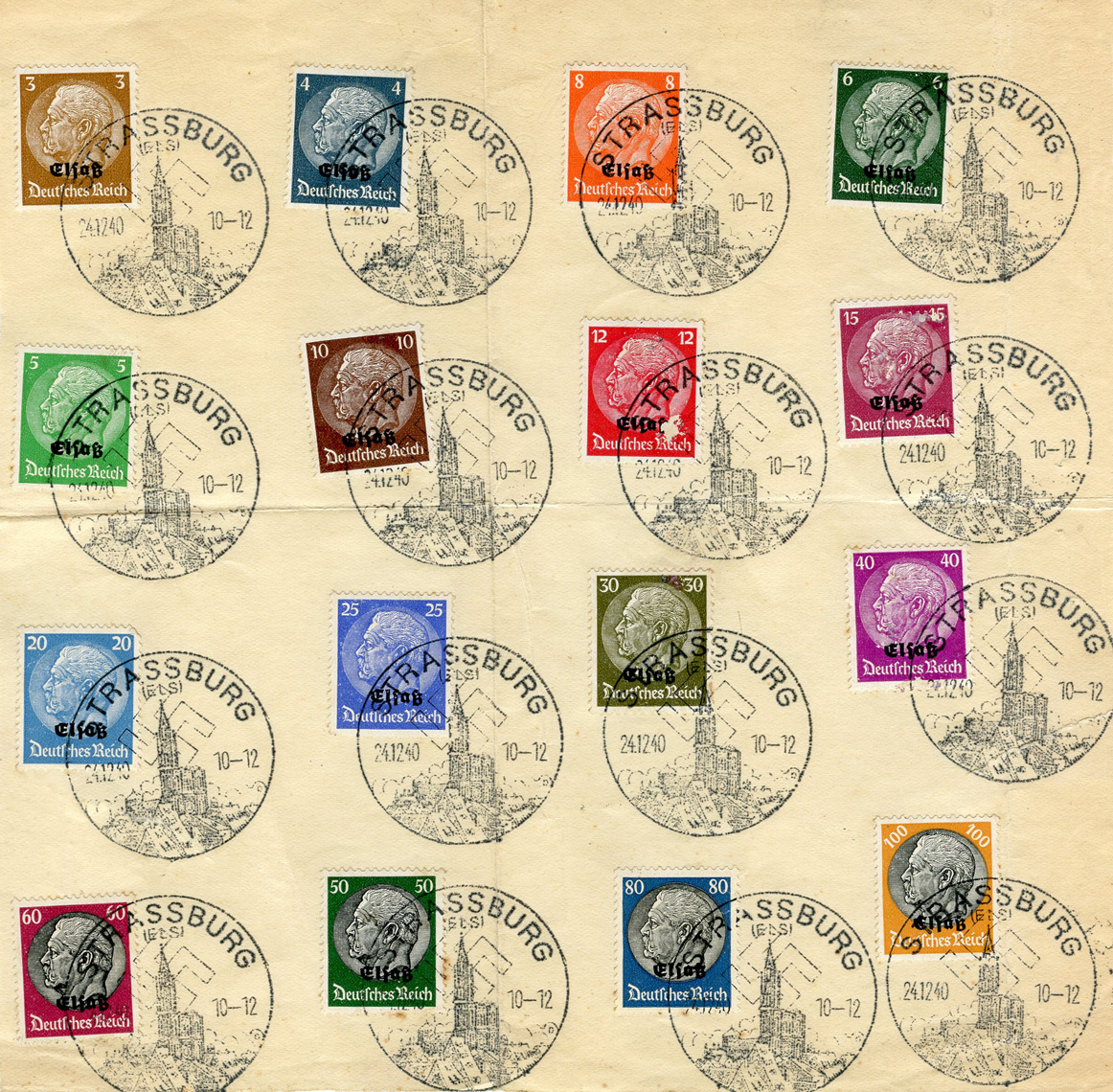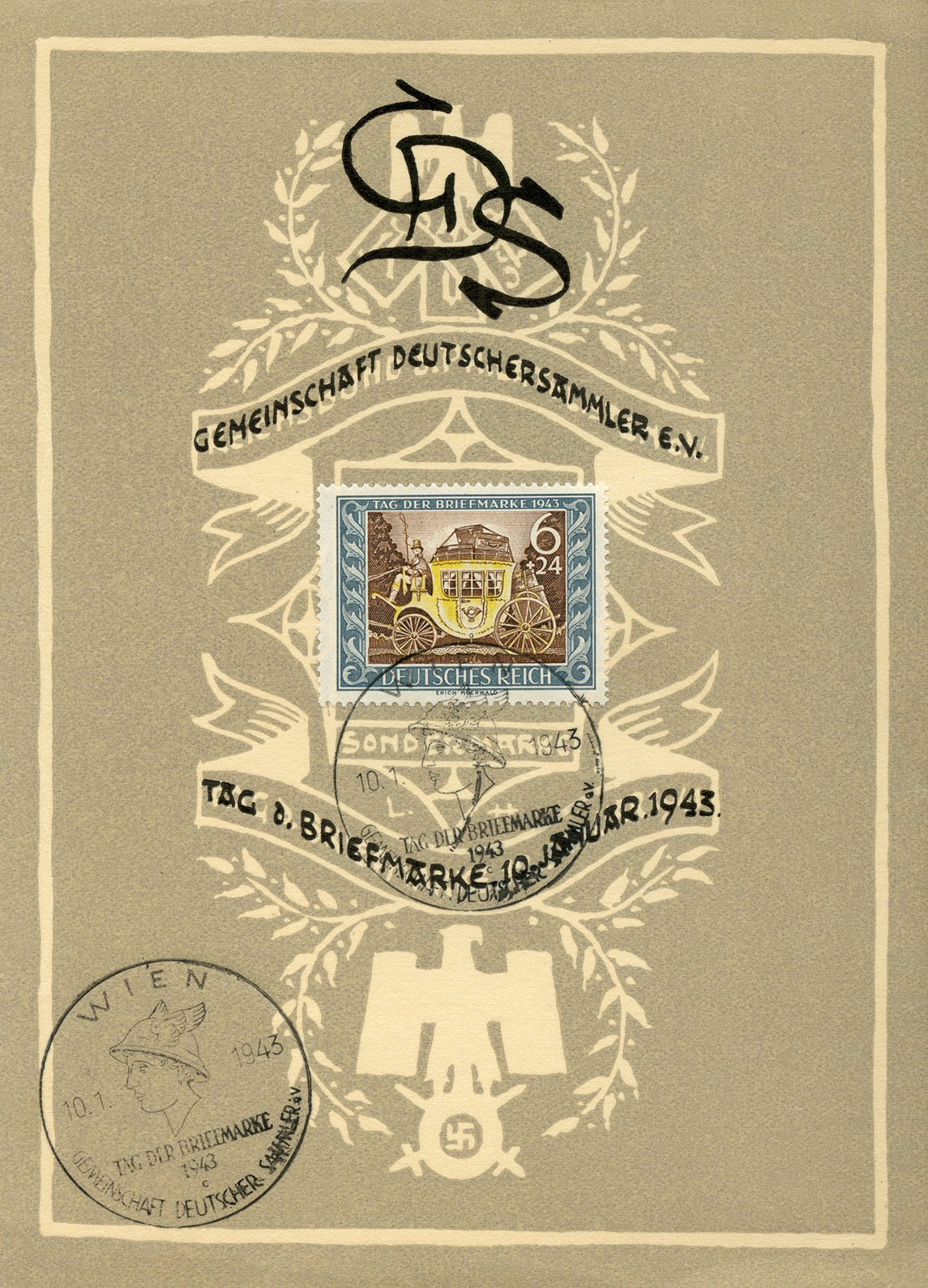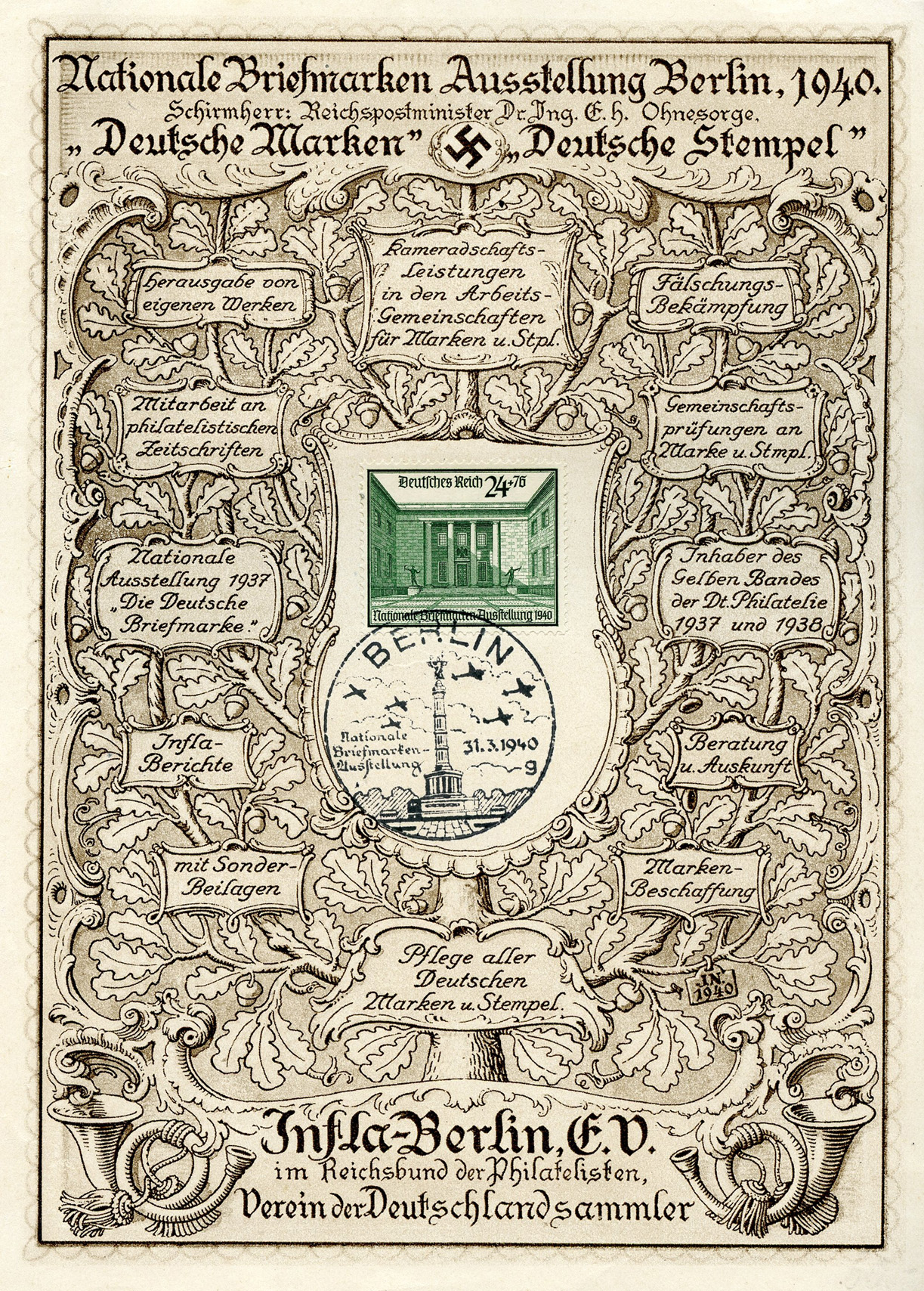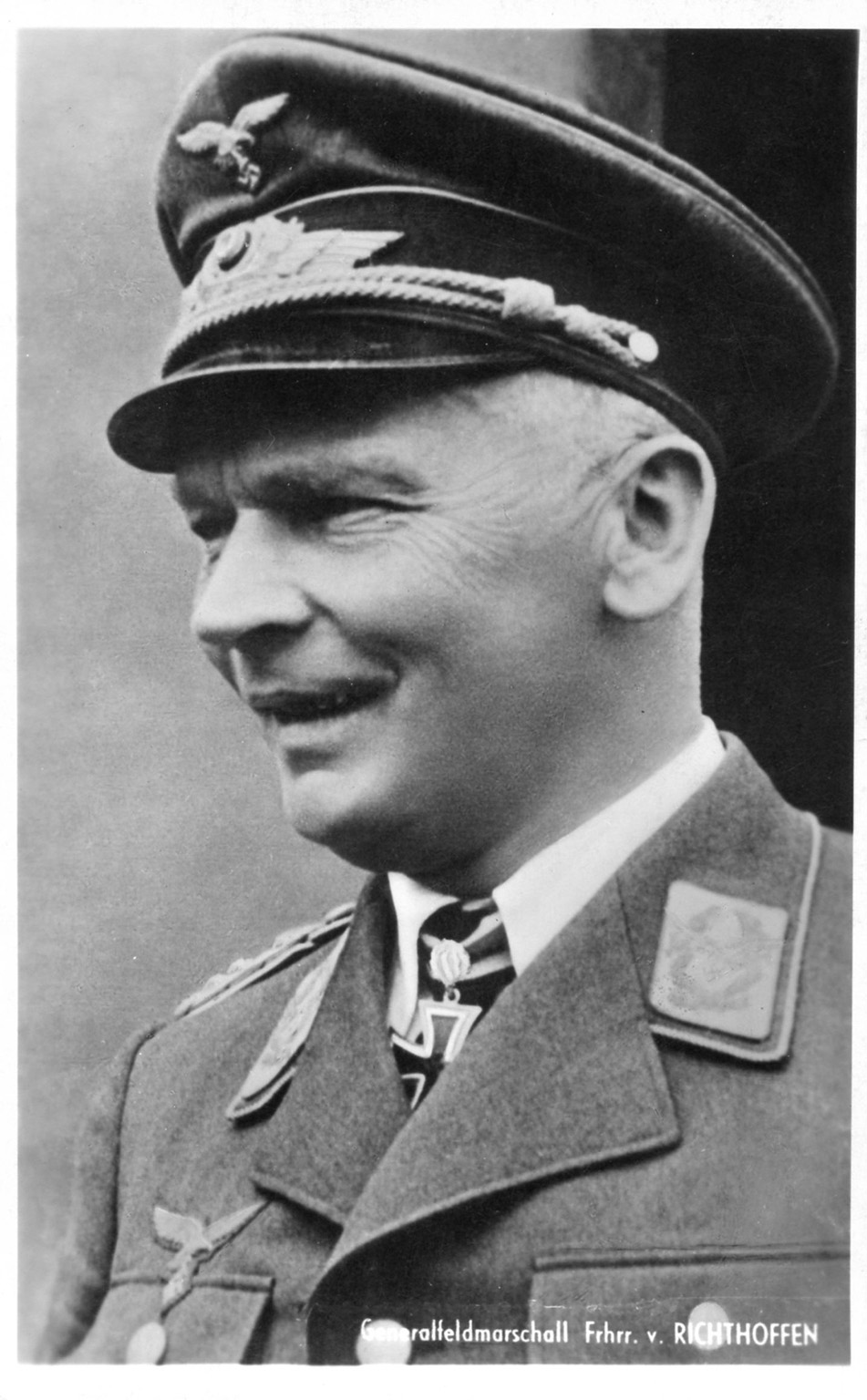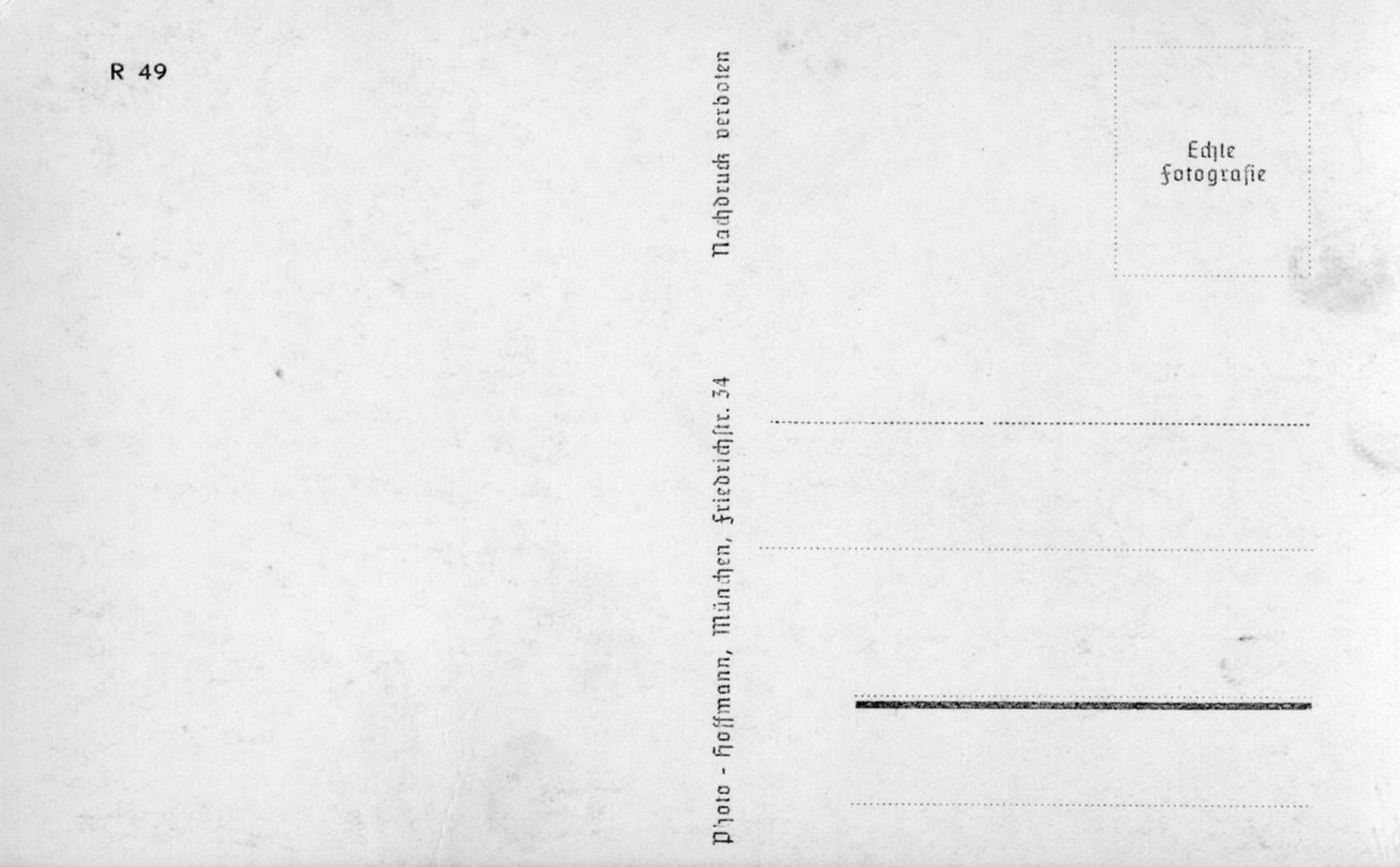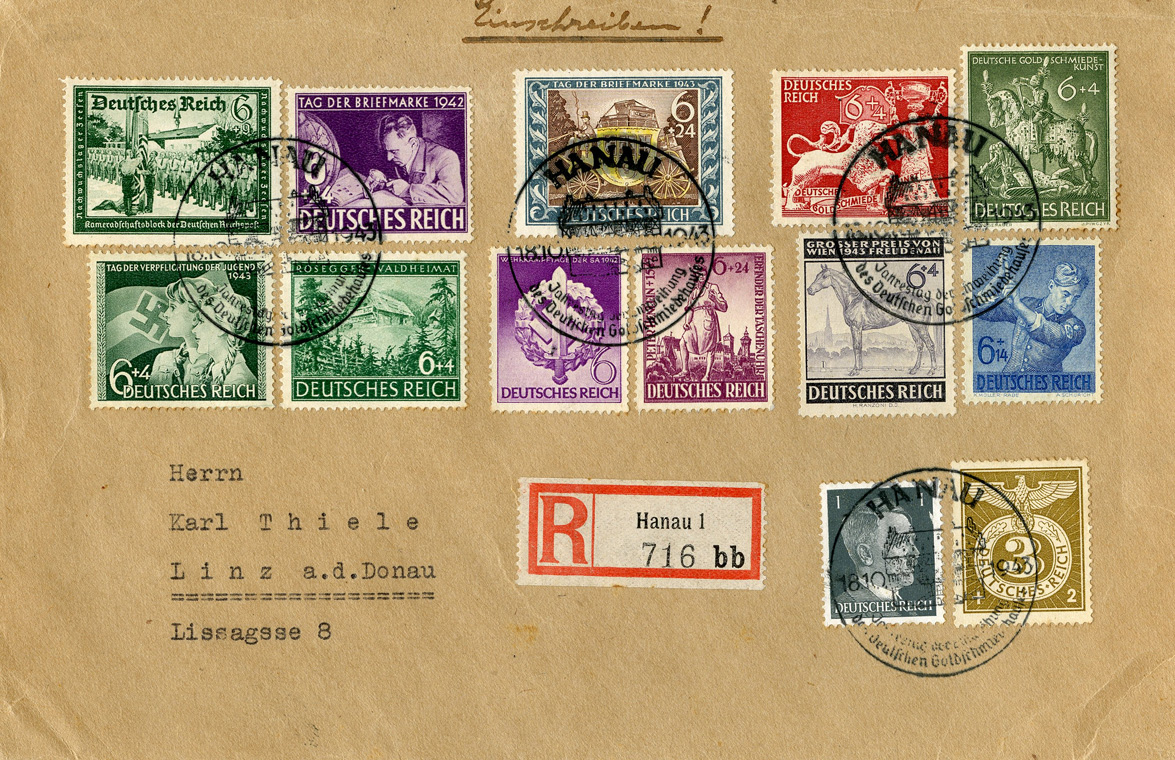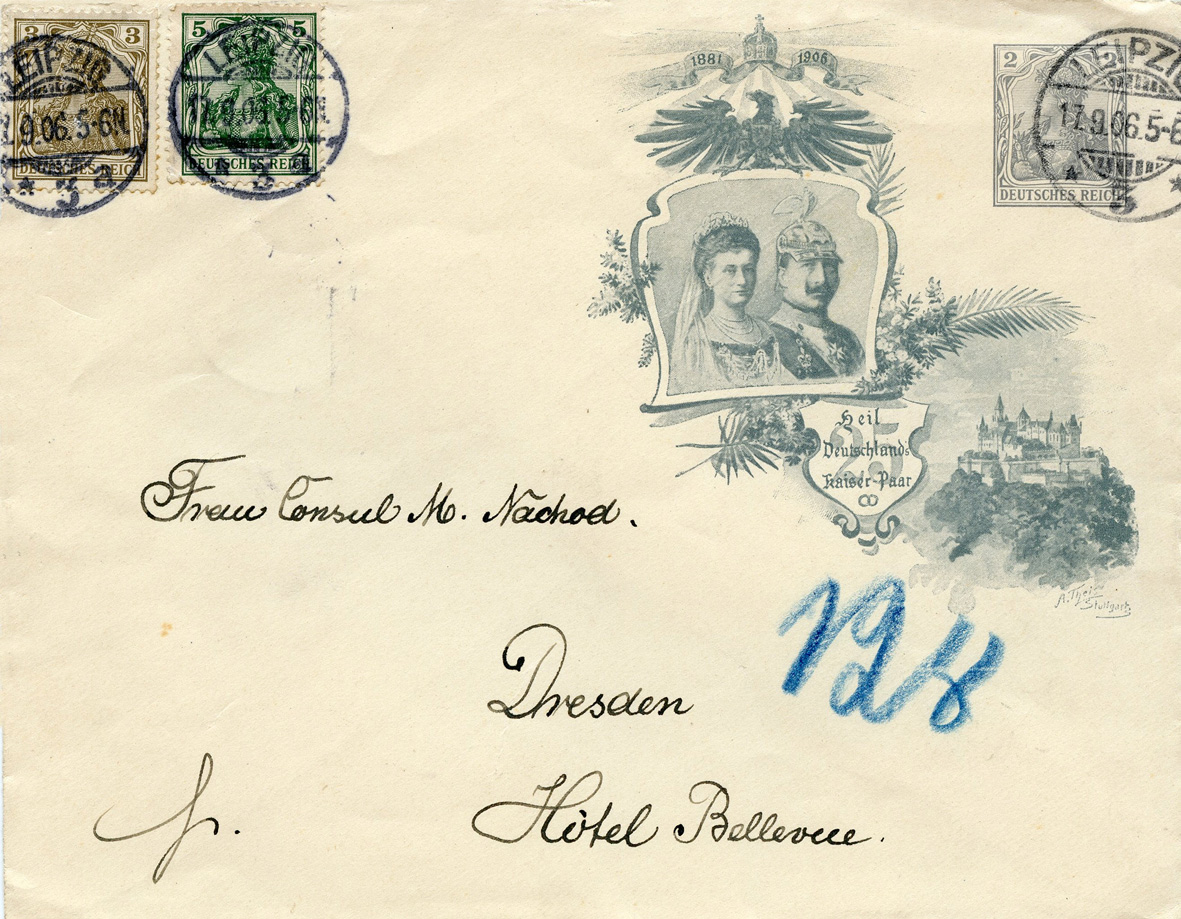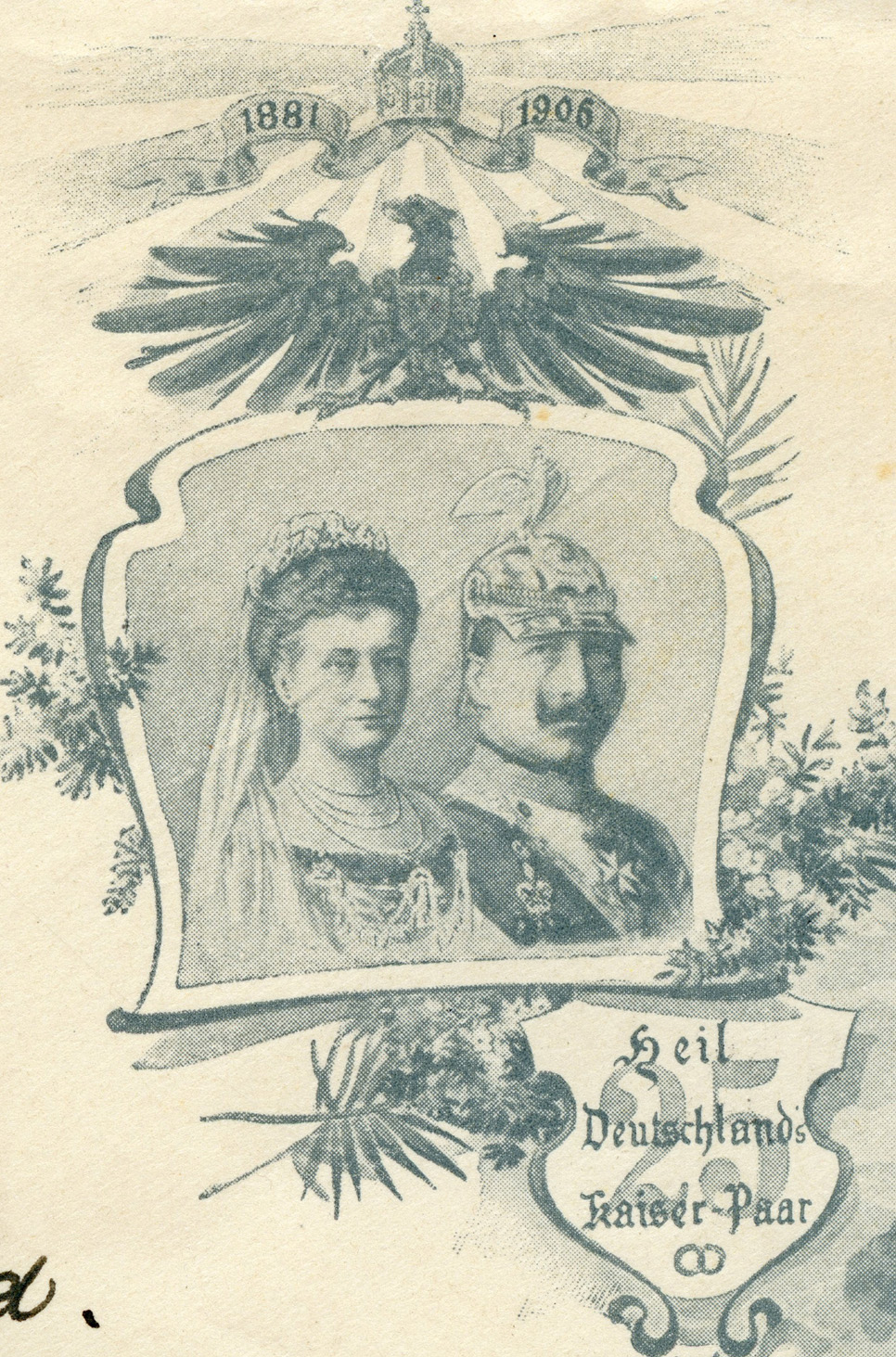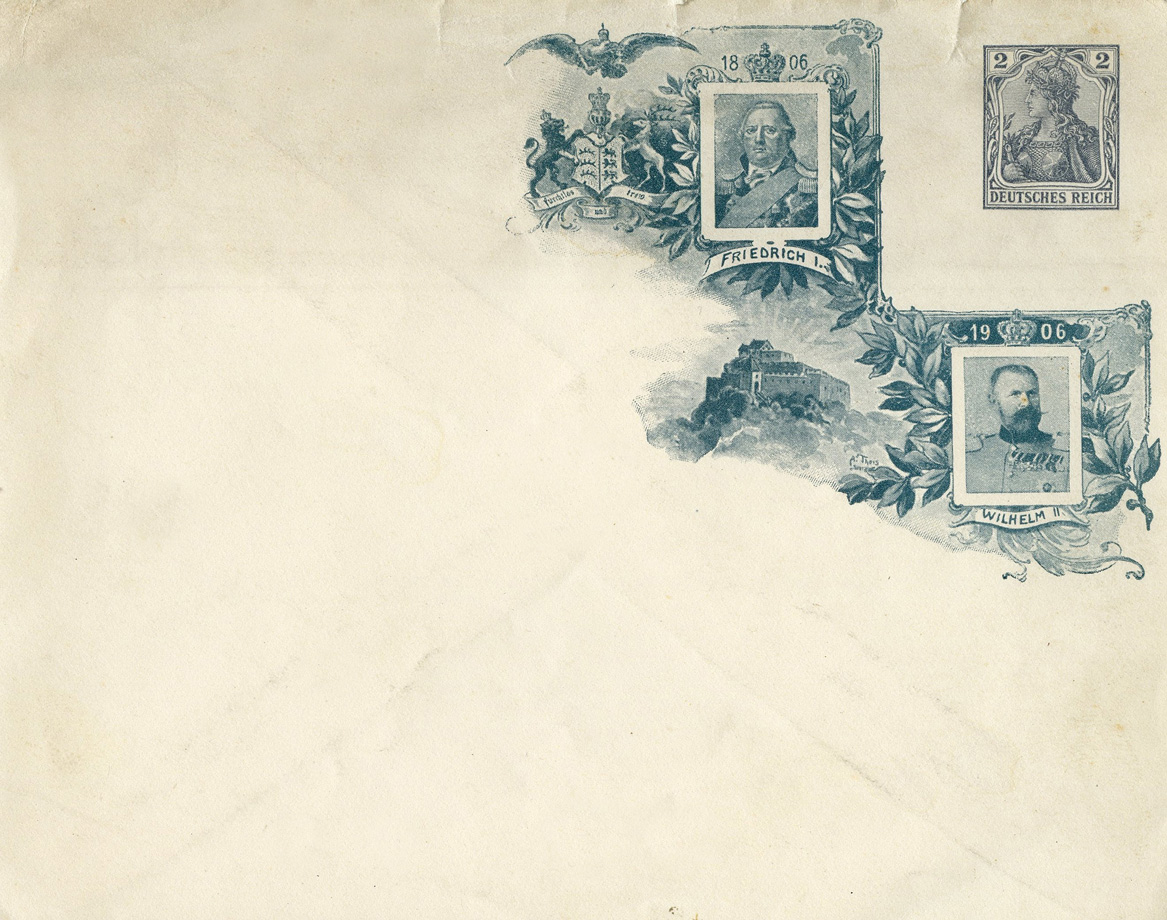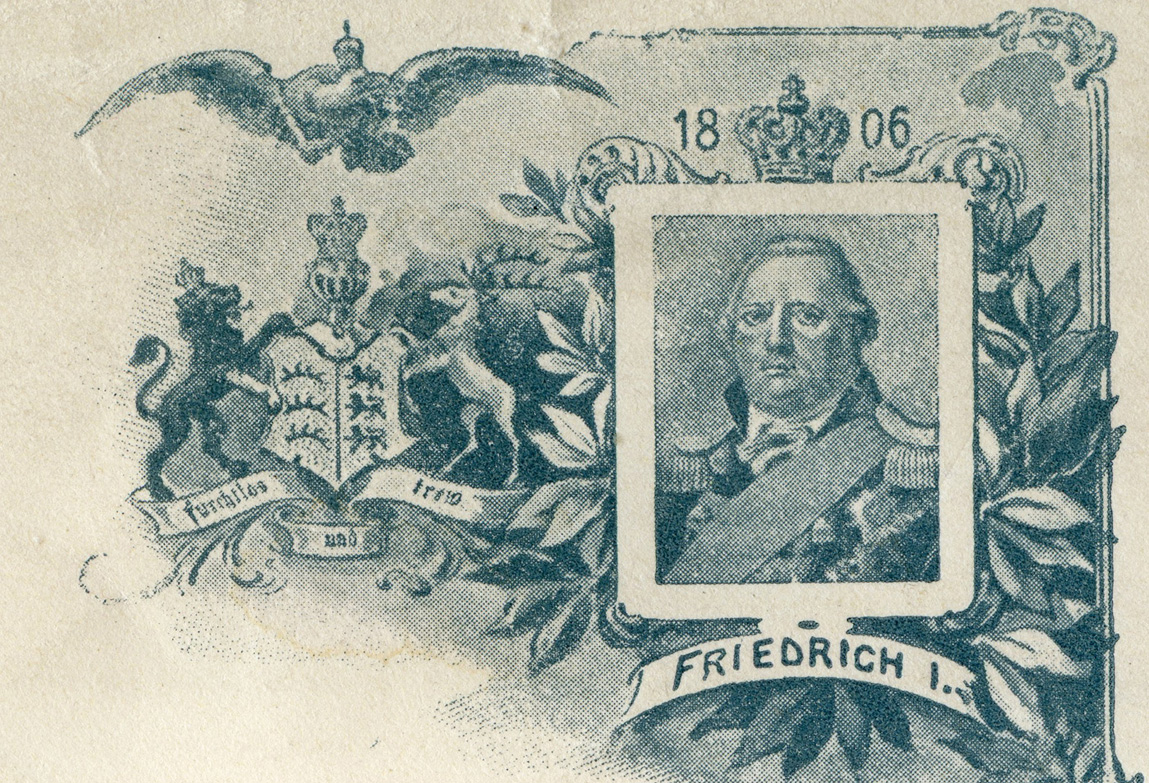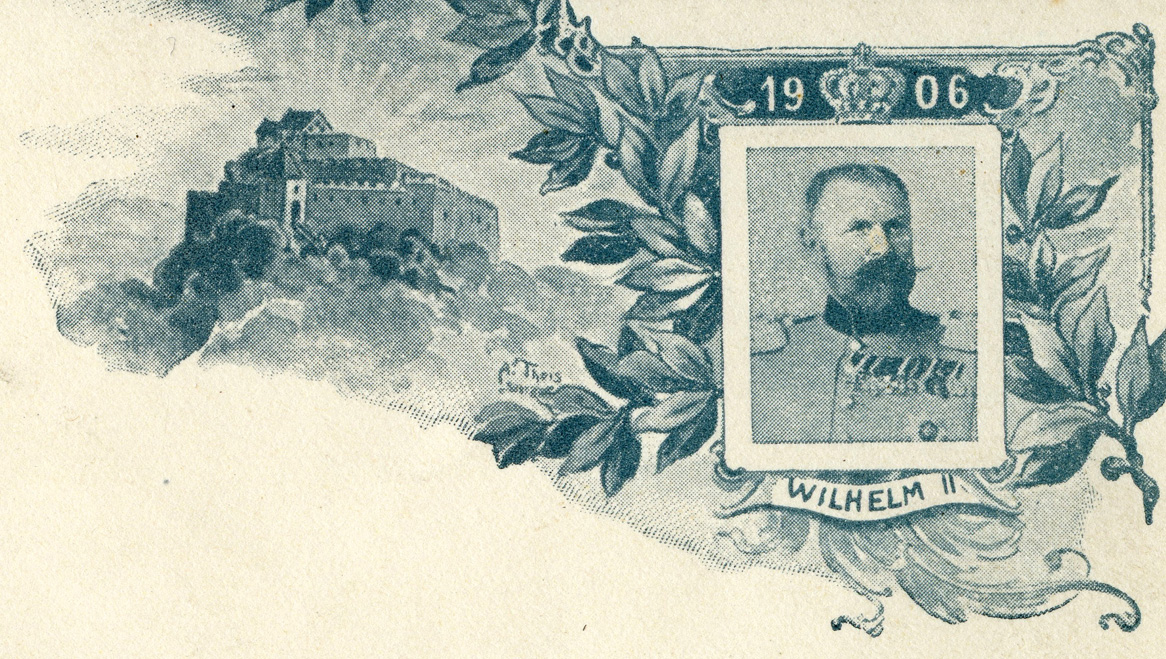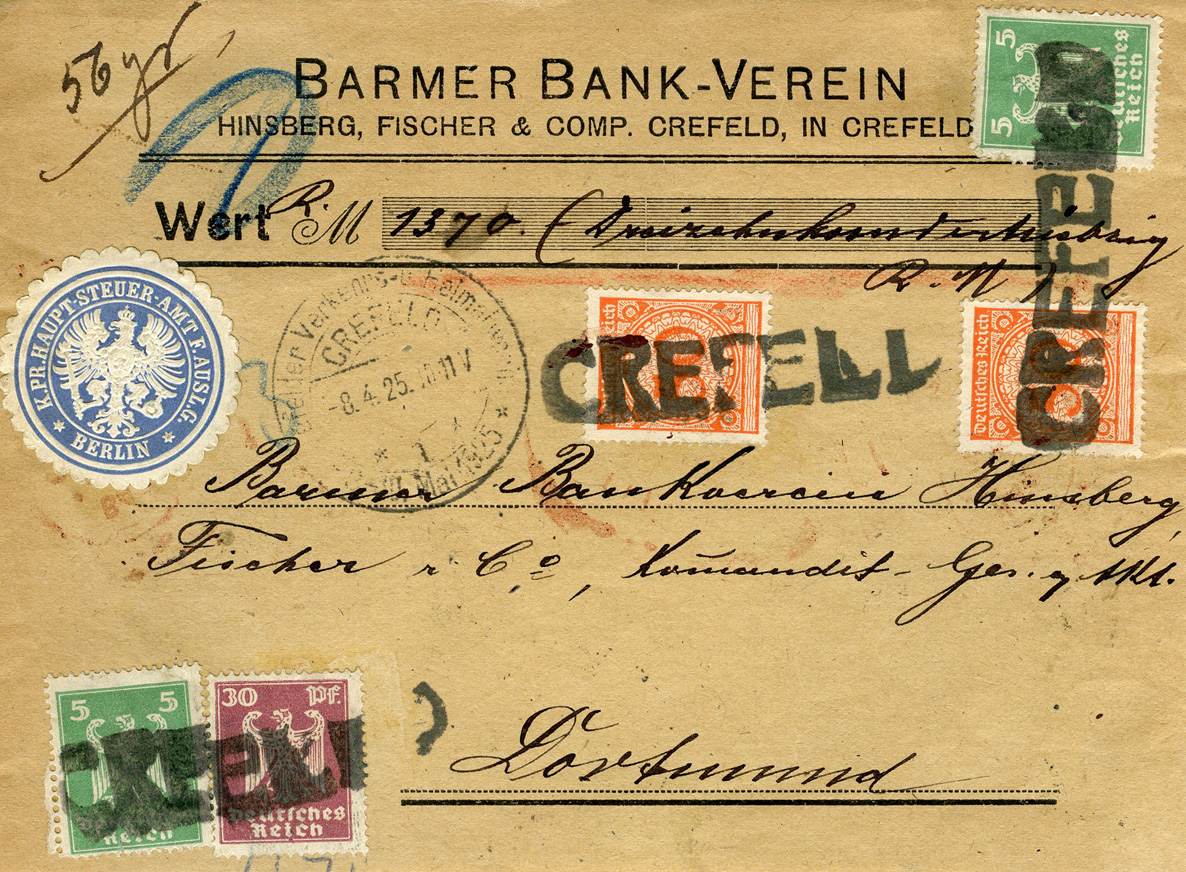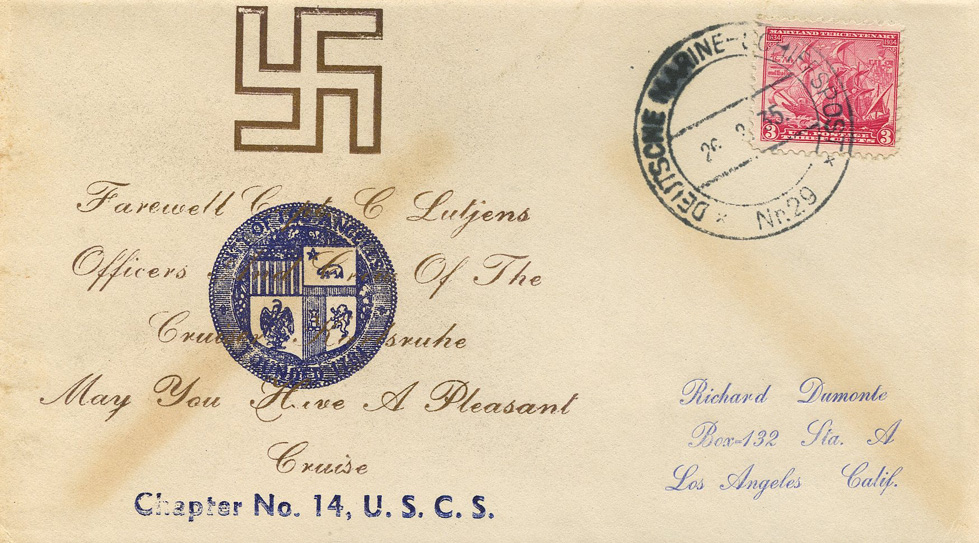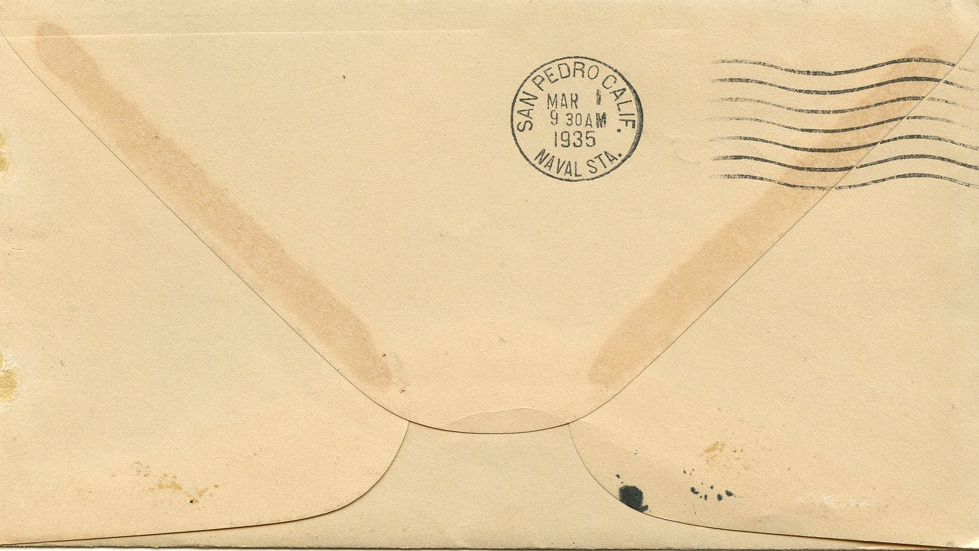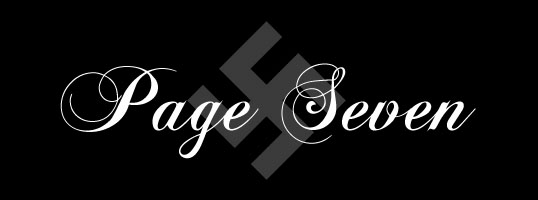
[Below: Here is an envelope from the NSB (National Socialist Student League). This was sent from Bohemia and Moravia (modern Czechoslovakia) in 1940.]
[Below: Eagle close-up.]
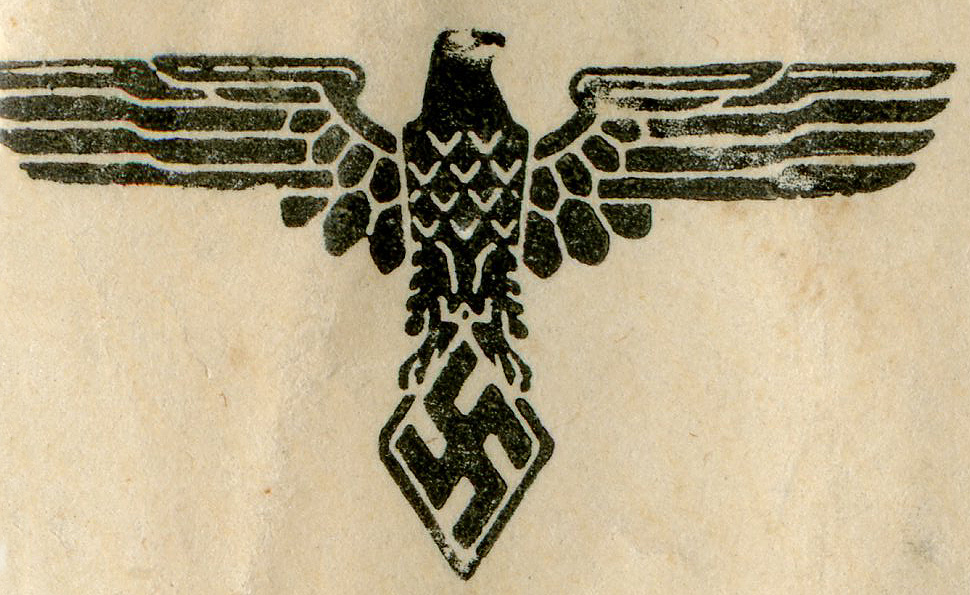

[Below: Here are a pair of interesting envelopes. The first one is postmarked November 26, 1937 and is from Berlin (from the office of the police president). Note that the Hindenburg stamp is perferated with the letters 'POL'. This stands for POLIZEI (POLICE). Businesses would also use perforated stamps so that employees could not steal them.]
[Below: Stamp with 'POL' perforation.]
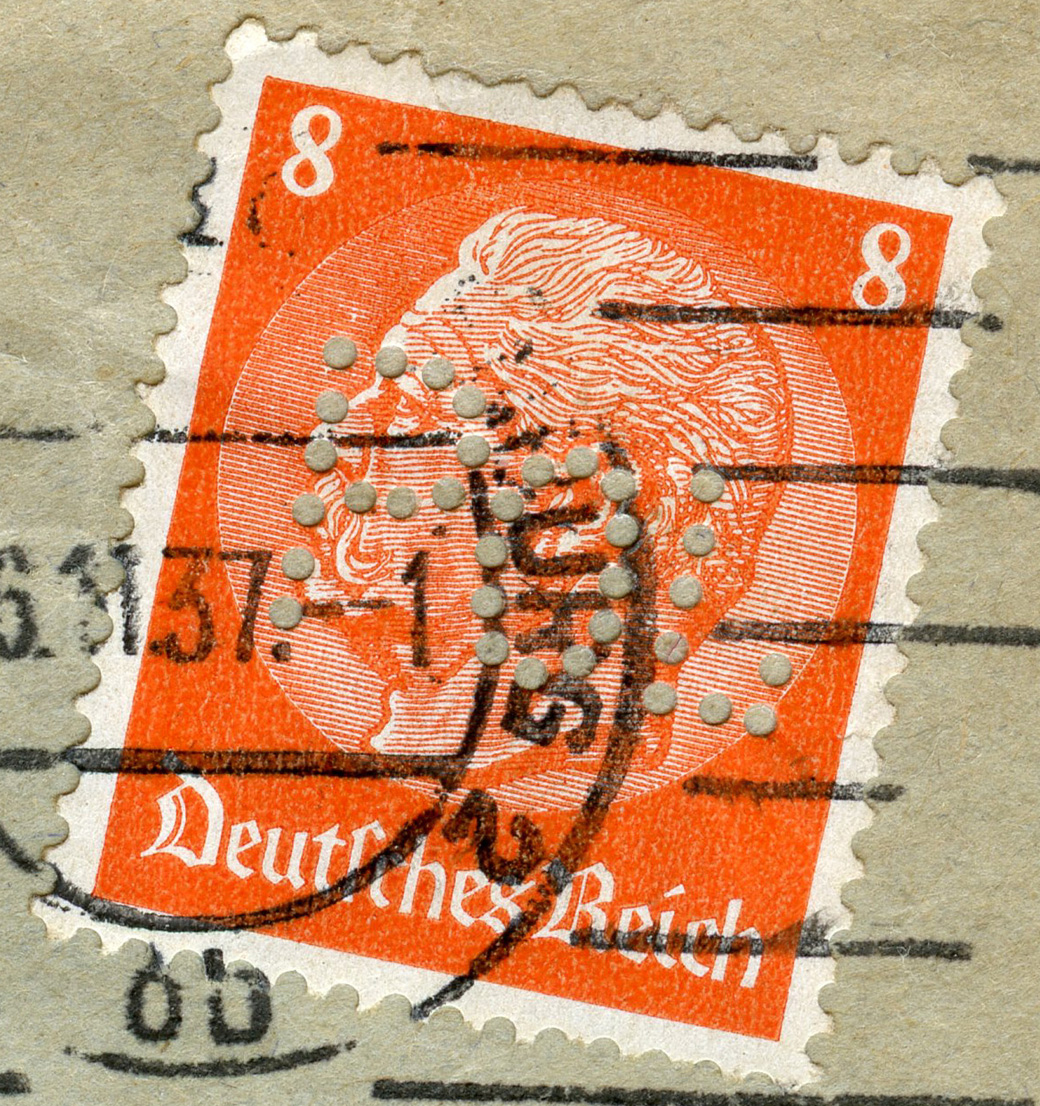
[Below: Police seal close-up.]

[Below: Here is another 'POL' envelope, this one is postmarked on October 2, 1934 from Gladbach-Rheydt (a former city in West Germany and now part of Mönchengladbach, which is a city in North Rhine-Westphalia).]
[Below: Stamp with 'POL' perforation.]
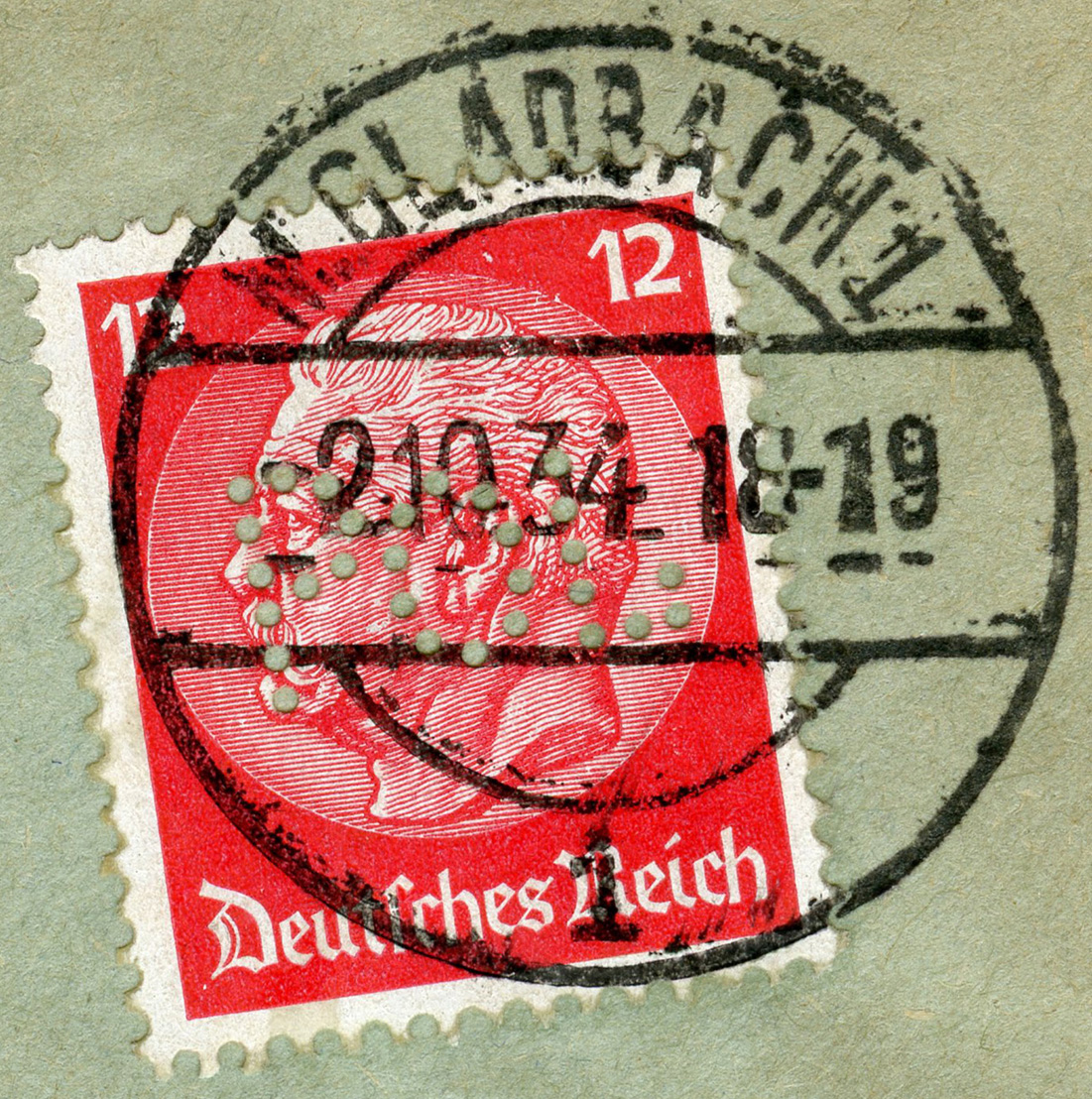
[Below: Police seal close-up.]
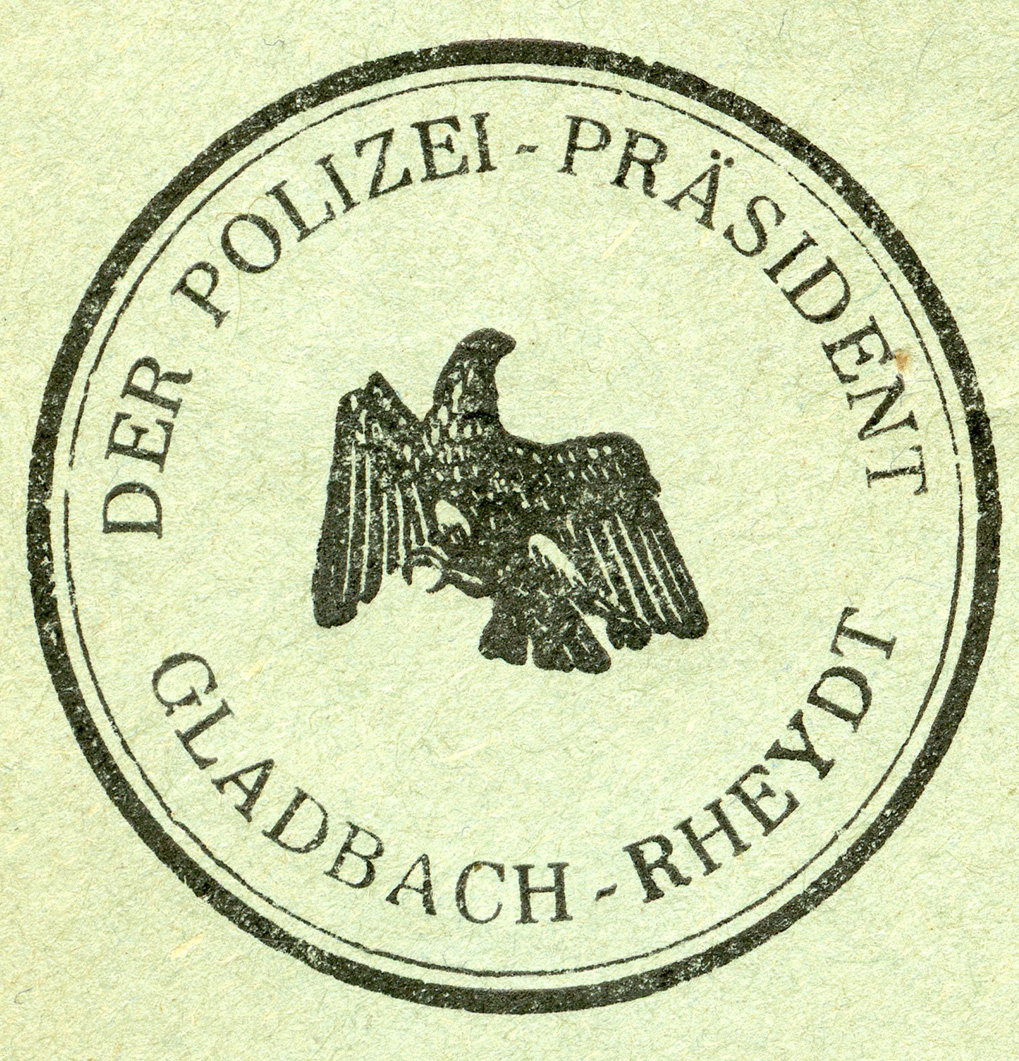

[Below: Here's a beautiful envelope from Saar, bearing a set of overprinted stamps and postmarked on January 13, 1935. The Saar once again became part of Germany on March 1, 1935. The special postmark says 'Saar-Abstimmung - 13. Januar 1935 - HEIL HITLER' (Saar vote HEIL HITLER), like the Anschluss in Austria, the Saar overwhelmingly voted to return to Germany. It was stripped from Germany, like so much of its lands, after WWI. Note that the overprint on the stamps says 'Volksabstimmung'(referendum).]
[Below: Close-up of cancel.]

[Below: Here is a postcard postmarked April 20, 1938 (Adolf Hitler's 49th birthday!) from 'Lockstedter Lager' (Lockstedter Camp), which was a training facility for the SA and later served as a barracks for workers and POWs. This camp was located in Schleswig Holstein and also served as a barracks for troops in Imperial Germany.]
[Below: Cancel close-up.]
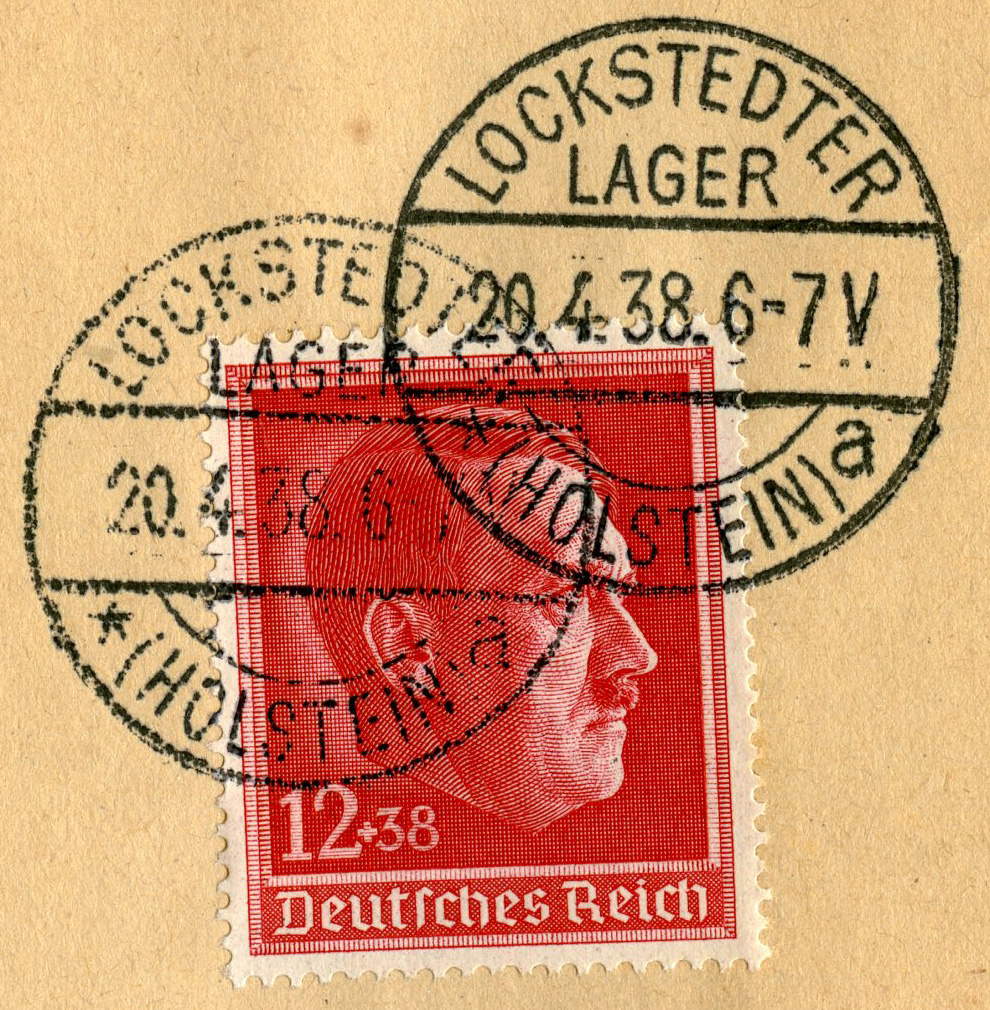
[Below: Regiment nr. 90, 1.battalion ersatzat at the Lockstedter Camp, 1916.]
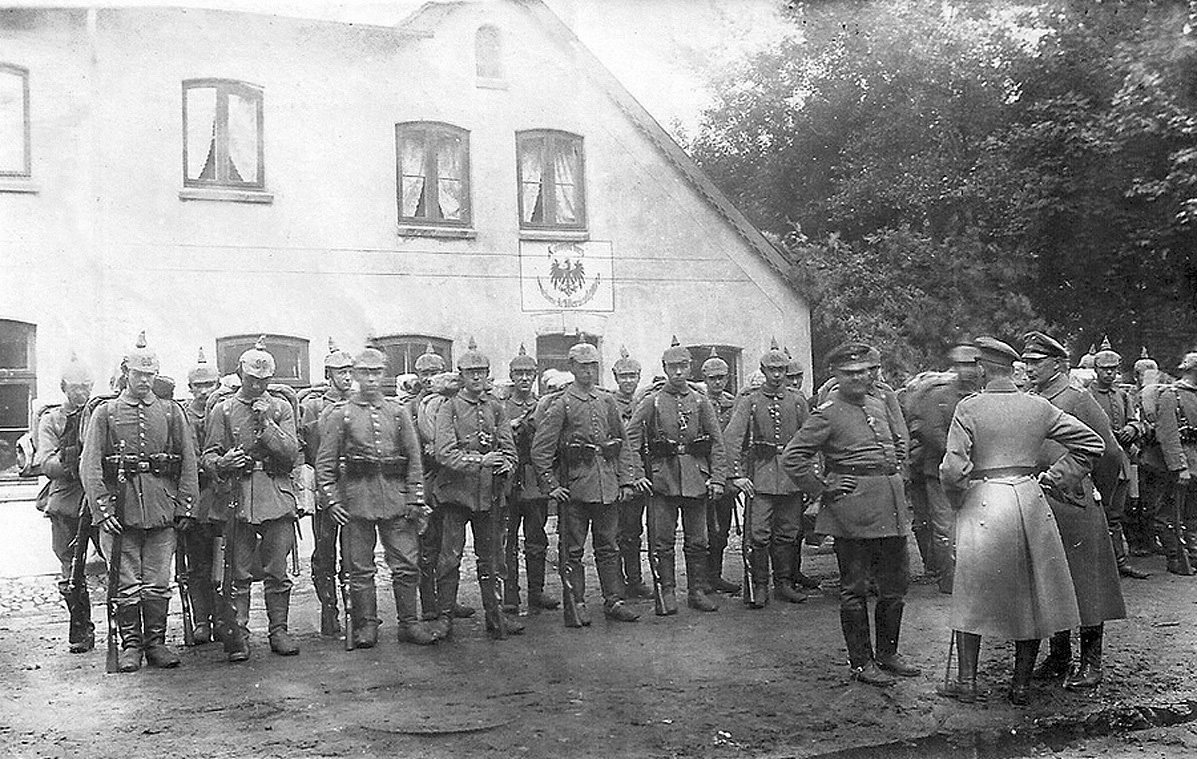

[Below: Here is an envelope from 'Die Deutsche Arbeitsfront, or DAF'(The German Labor Front). It is from 'Kreoswaltung Dillingen - Lauingen, Rathaus' (Dillingen administration - Lauingen, town hall). Lauingen is a town in the district of Dillingen in Bavaria.]
[Below: Close-up of DAF cogwheel. The DAF was the largest organization in the Third Reich.]
[Below: Reverse of envelope showing gum to seal the letter.]

[Below: This is a neat postcard showing various professions. The top says 'Arbeit und Ehre' (Work and Honor). It shows the German Labor Front cogwheel symbol and the hammer, acorn and leaf of a professional workers' organization.]
[Below: Reverse of postcard. Yeah it is pretty scuffed up, but it is a pretty rare postcard. It says 'Reichshandwerkertag' (Reich Crafts Day).]
[Below: Close-up.]
[Below: Here is a membership book of the organization mentioned above. Click to see inside.]
[Below: Here is an advertising stamp from 1937 with the hammer and oakleaves motif.]
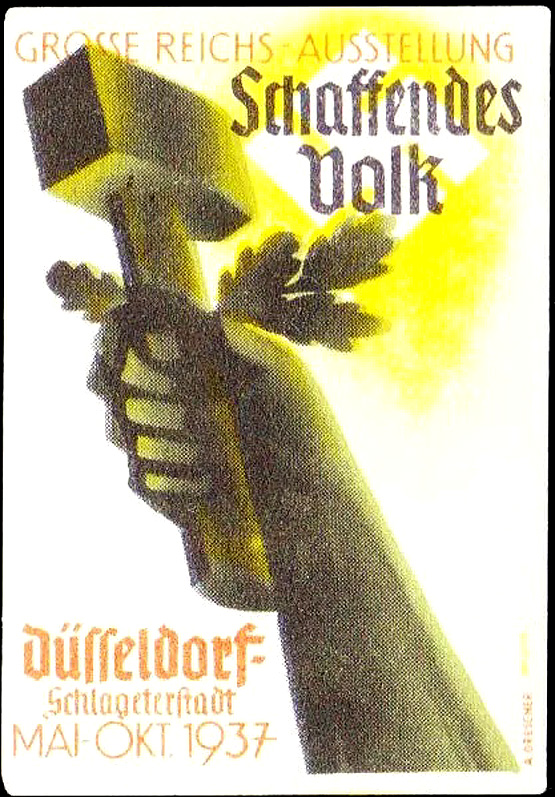
[Below: Here is a silver foil version.]
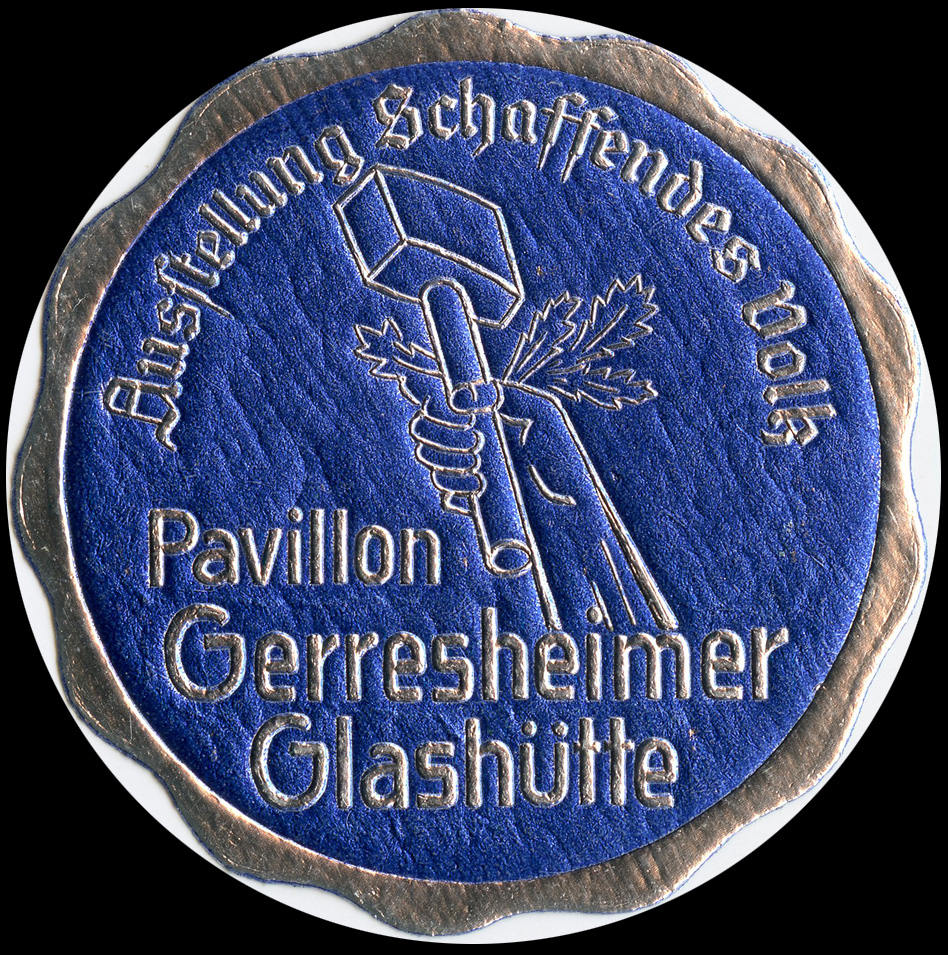
[Below: Here is a cancel cut out from an envelope.]
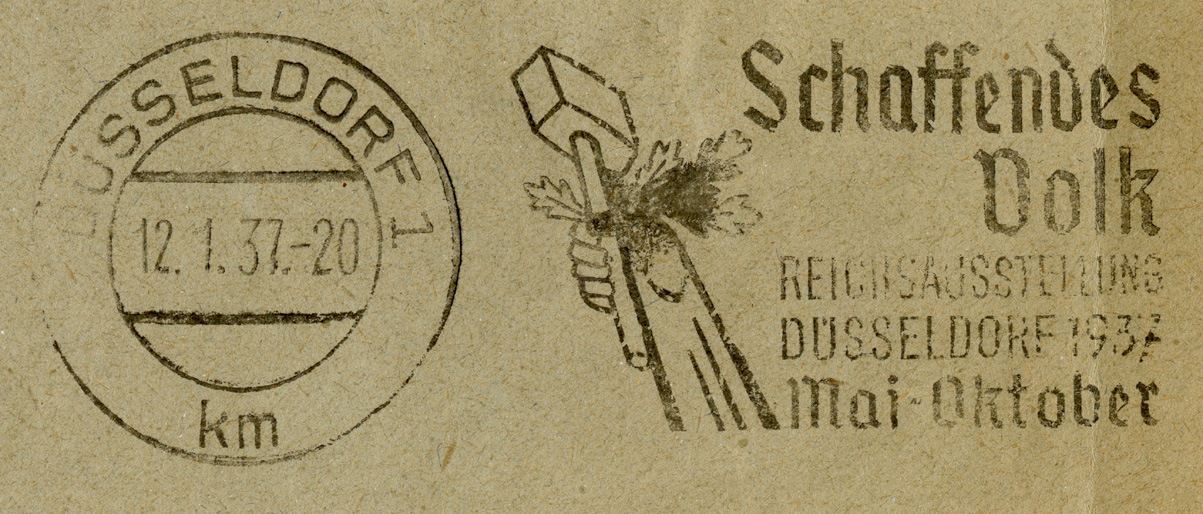
[Below: Souvenir sheet with Reichs Craft Day cancel.]
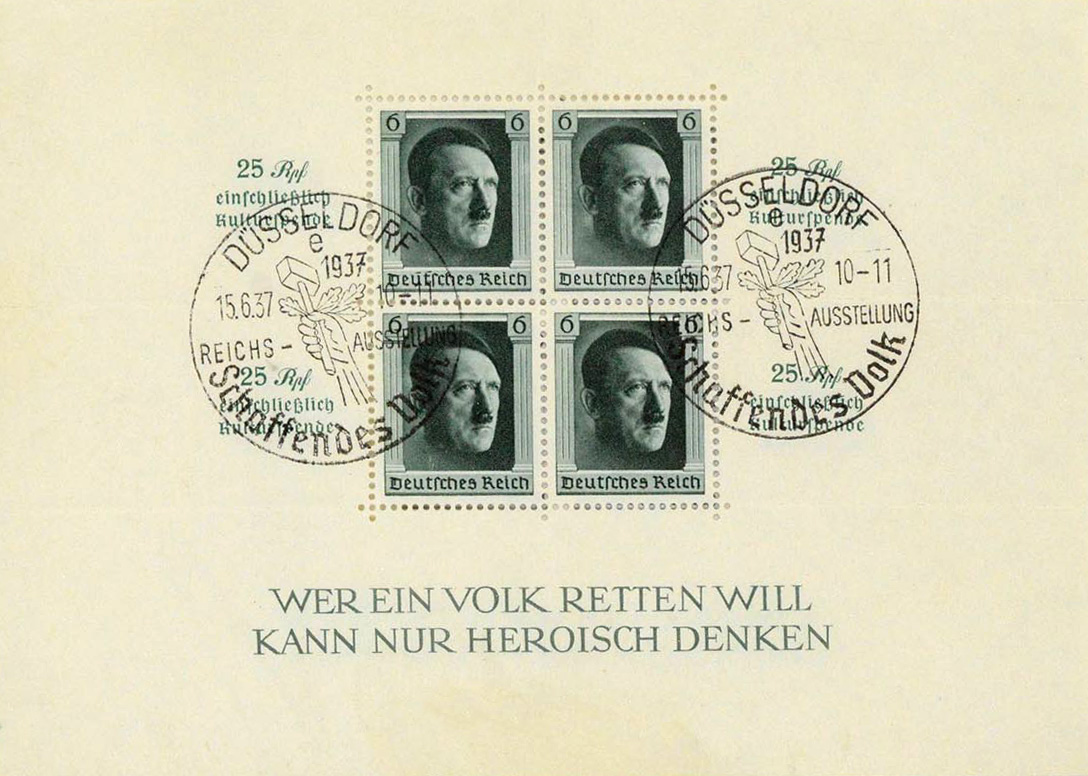
[Below: Beautiful aluminum Reichs Craft Day tinnie.]

[Below: Here is a rare envelope that was sent to Walter Reder while imprisoned in Italy. Reder was an SS-Sturmbannführer, who served in the SS Division 'Totenkopf' and was Battalion Commander of the 16. SS-Panzergrenadier Division 'Reichsführer-SS'. It was sent by 'Ordensgemeinschaft der Ritterkreuzträger' (Order of Knight's Cross Holders) on January 9, 1979. Click to enlarge.]
[Below: Reverse of envelope.]

[Below: This is a very common postcard, but with an uncommon and interesting message on the back. First, this says:
'Der Führer kennt Kampf,
Arbeit und Sorge.
Wir wollen ihm den Teil abnehmen,
Den wir ihm Abnehmen können.
(The Führer knows struggle,
work and worry.
We want to take that part off his hands,
that we can take from him.)
Click to enlarge.]
[Below: Reverse of postcard. This says:
' Februar 1945.
Bei dem Terror angriff auf Magdeburg erlitt ich Totalschaden. Mit Genehmigung der Behörden habe ich meinen Betrieb wieder eröffnet. Um dem dringenden Bedürfnis der Versorgung der geschädigten Volksgenossen Rechnung tragen zu können bitte ich alle meine Geschäftsfreunde herlich, mich durch Lieferung-wenn möglich durch eine Sonderzuteilungzu unterstützen...
(February 1945.
I suffered total damage in the terror attack on Magdeburg. With the permission of the authorities, I have reopened my business. In order to meet the urgent need to supply the injured people, I kindly ask all my business friends to support me by delivering - if possible by making a special allocation...)
The words 'Terror angriff' became a well-known word in the German language during WWII. It means terror attack, something that the Allies became widely known for as they destroyed most of Europe with fire bombs. Often flying AROUND military targets to hit civilian cities! Seems insane doesn't it? But very true. These are the same people who bombed grave yards and machine gunned animals.]

[Below: Here is a large sheet of a full set of German liberation of Alsace postage stamps with Strassberg cancels from December 24, 1940. Click to enlarge.]

[Below: Here is a souvenir sheet celebrating Postage Stamp Exhibition, January 10, 1943. The postage stamp in the middle also celebrates 'Tag der Briefmarke' (Postage Stamp Exhibition). Note the cancel also celebrates Postage Stamp Exhibition, with a Hermes image. Click to enlarge.]

[Below: Here is another souvenir sheet celebrating Postage Stamp Exhibition. It says: 'Nationale Briefmarken Aussstellung Berlin, 1940 - Deutsche Marken Deutsche Stempel' (National Stamp Exhibition Berlin, 1940). Click to enlarge.]

[Below: Here is a huge homemade 'souvenir sheet', I'm not sure if someone did this for themselves, or if it was sold. I would be of the opinion that it was some sort of company that put it together, due to the fact it has seven different city cancels. So unless someone traveled to seven different locales to get these cancels... what is also interesting is the center portrait of Adolf Hitler. This is taken from a postcard, which they cut smaller. Very strange to destroy a perfectly good postcard. Anyway, it is pretty neat. Click to enlarge.]

[Below: Here is a postcard of one of my favorite people from WWII - Wolfram von Richthofen. A cousin of the Red Baron, he was brilliant, it seemed everywhere he went the Germans were victorious. His talents were enormous, including his ability to stop infighting. He would call Adolf Hitler directly and if he couldn't get him on the line he would fly many hours through the Eastern Front to speak with him personally. I can't tell you enough just how great he was, you have to read for yourself. It is one of the most bizarre facts of WWII that he is not well-known at all. Most WWII buffs have never even heard of him and very few books have been written about him. Tragically, a brain tumor took him away from us. Click to enlarge.]
[Below: Postcard reverse.]
[Below: February 1943 issue of Luftflotte Südost (Air Fleet Southeast) with Wolfram von Richthofen of the cover.]
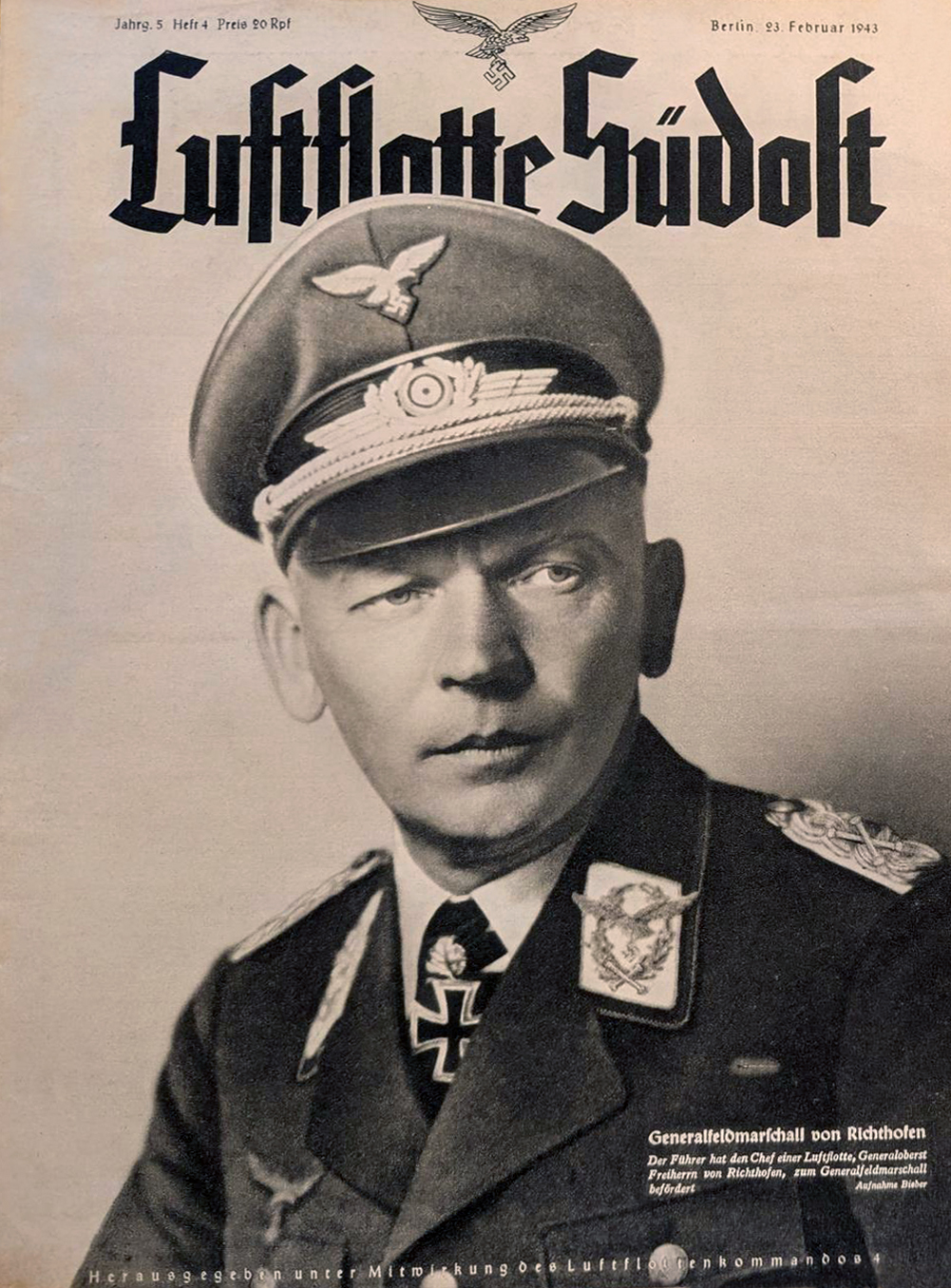

[Below: A nice-looking philitelic envelope from 1943 from Hanau. It contains a wide variety of various stamps from the Third Reich.]
[Below: Stamps close-up.]
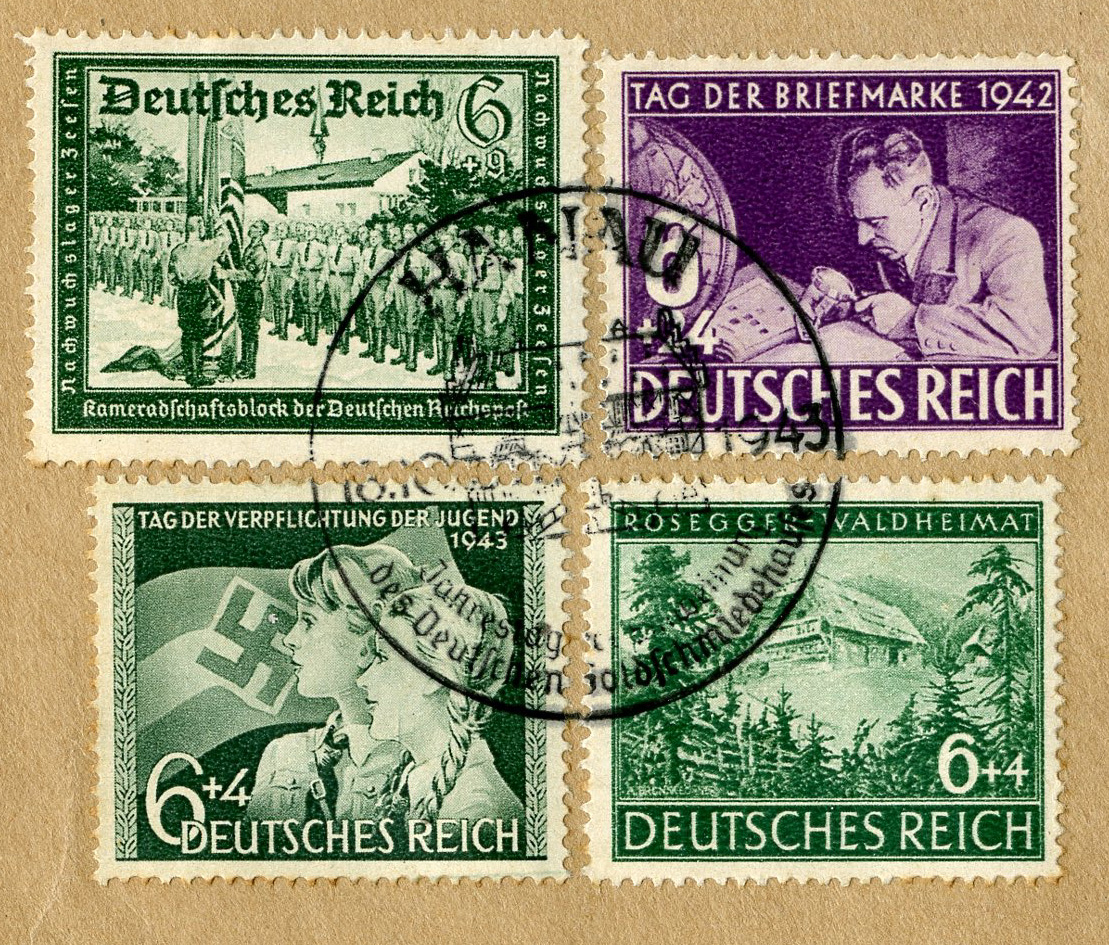
[Below: Stamps close-up.]
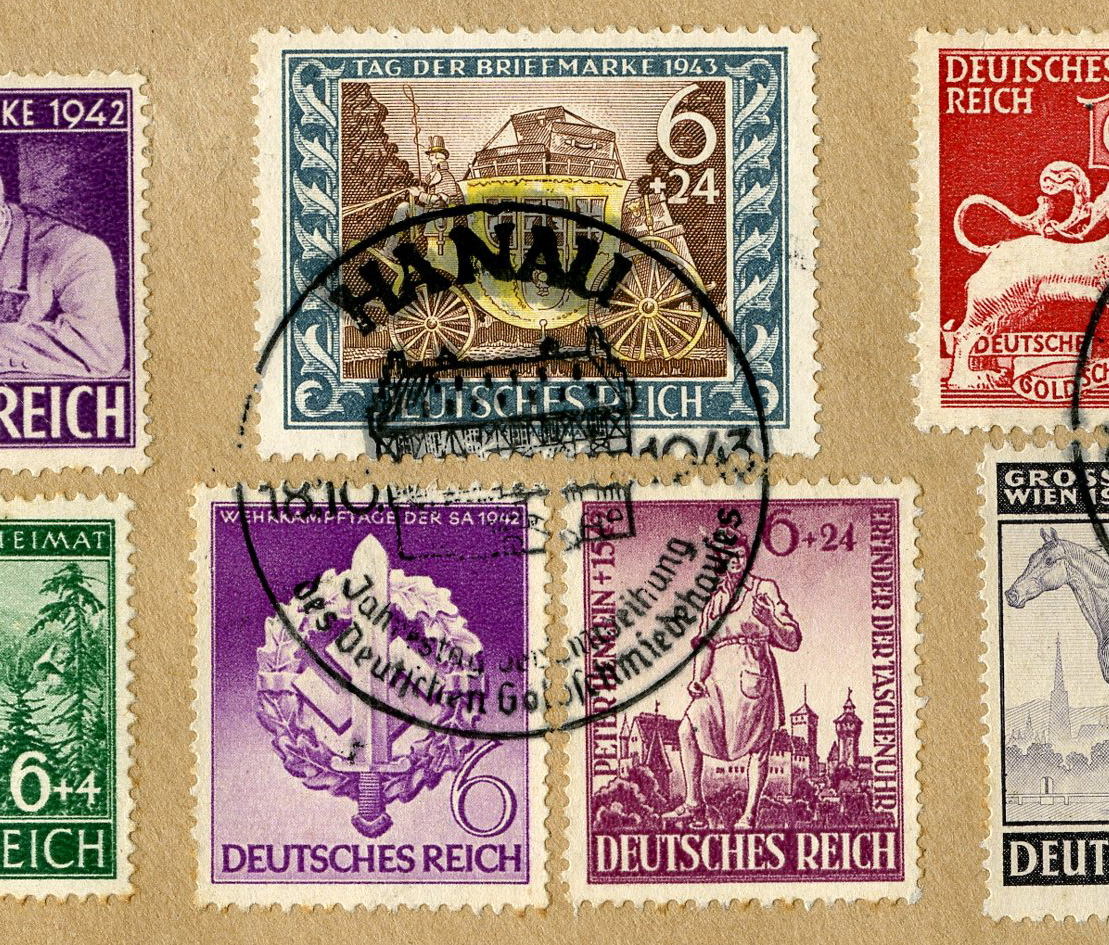
[Below: Stamps close-up.]
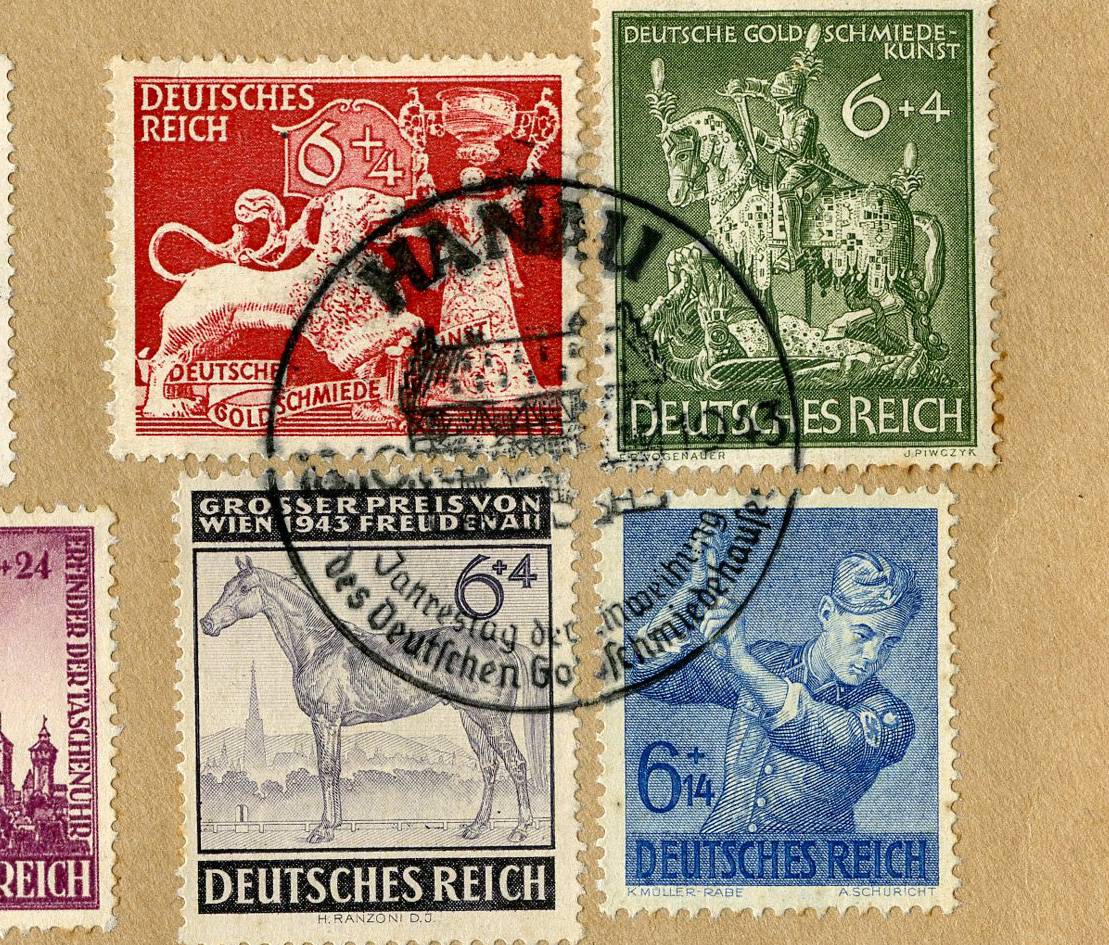
[Below: Stamps close-up.]
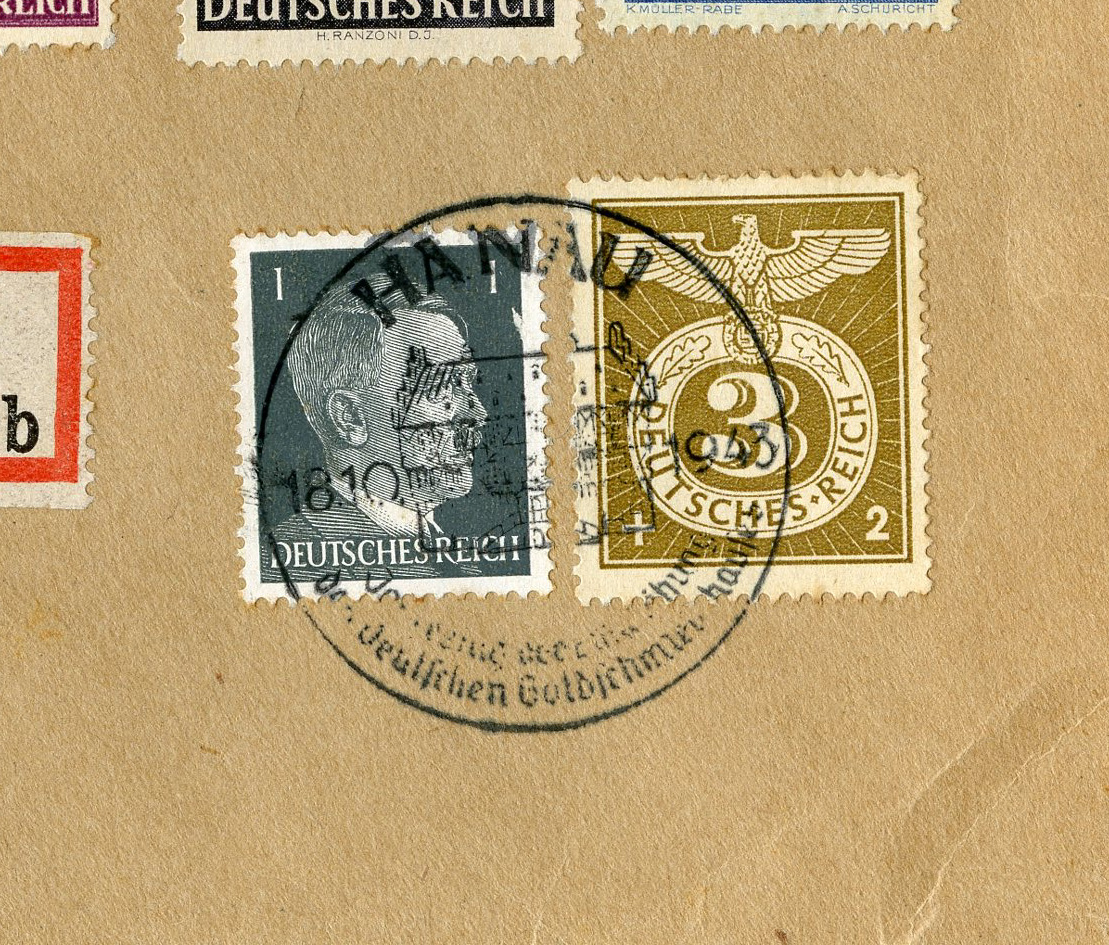

[Below: Here are a handful of interesting decorative envelopes from the WWI era (and before). First, here is a neat envelope from the WWI German occupation of Belgium. It says:
'Lüttich gefallen: 7. August
Einzug in Brüssel: 21. August
Namur genommen: 26. August
Antwerp kapituliert: 9. Oktober
Deutsche Truppen am Meer bei Ostende: 15. Oktober'
(Liège fallen: August 7th
Entry into Brussels: August 21st
Namur taken: August 26th
Antwerp capitulated: October 9th
German troops at sea near Ostend: October 15th)]
[Below: Stamp close-up.]
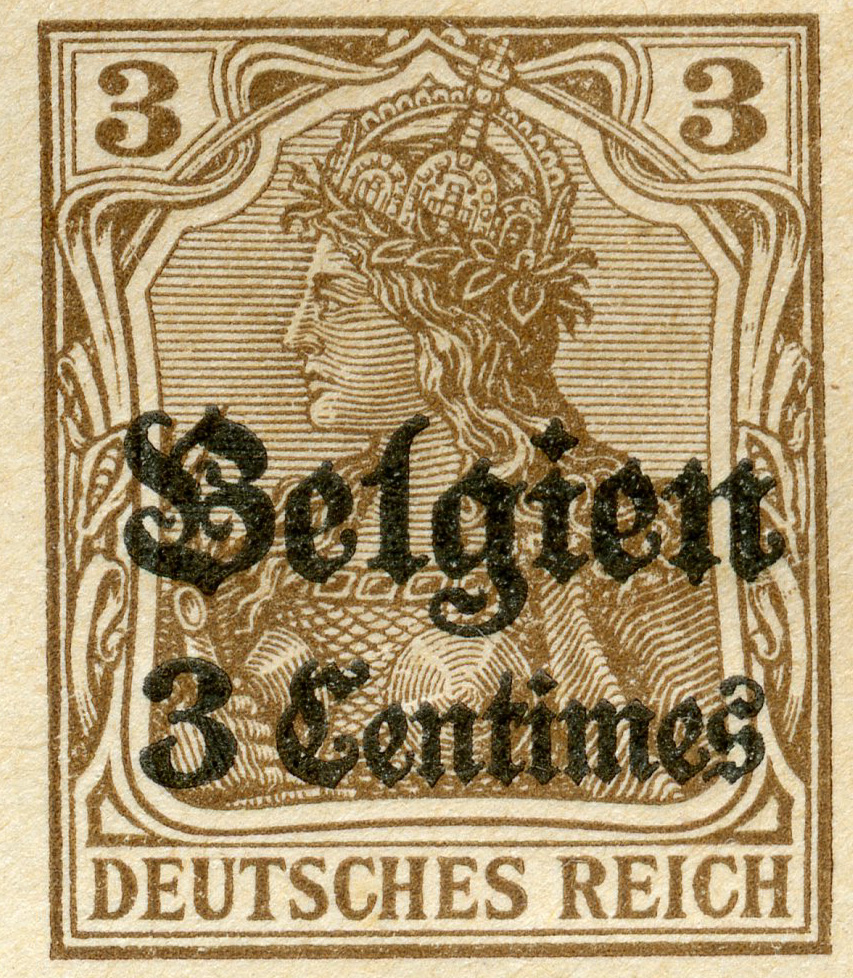
[Below: This decorative envelope was sent to Dresden and canceled in Leipzig on September 17, 1906. It has a prepaid 2 Pfennig stamp with additional postage added.]
[Below: Close-up.]
[Below: Here is a prepaid envelope celebrating Frederick I (November 6, 1754 – October 30, 1816), who was the ruler of Württemberg from 1797 to his death, and Wilhelm II (January 27, 1859 – June 4, 1941), who was the last German Emperor and King of Prussia from 1888 until his abdication in 1918.]
[Below: Close-up.]
[Below: Close-up.]

[Below: A rather strange bank envelope from 1925 with very crude local cancels from Crefeld (a city in North Rhine-Westphalia). Crefeld was nearly destroyed on June 21, 1943 by British bombs, who intentionally caused a firestorm that consumed large parts of the city. I'm not sure why this very primitive cancel was used here. Sometimes you see such crude cancels, but rarely.]
[Below: Official seal close-up.]
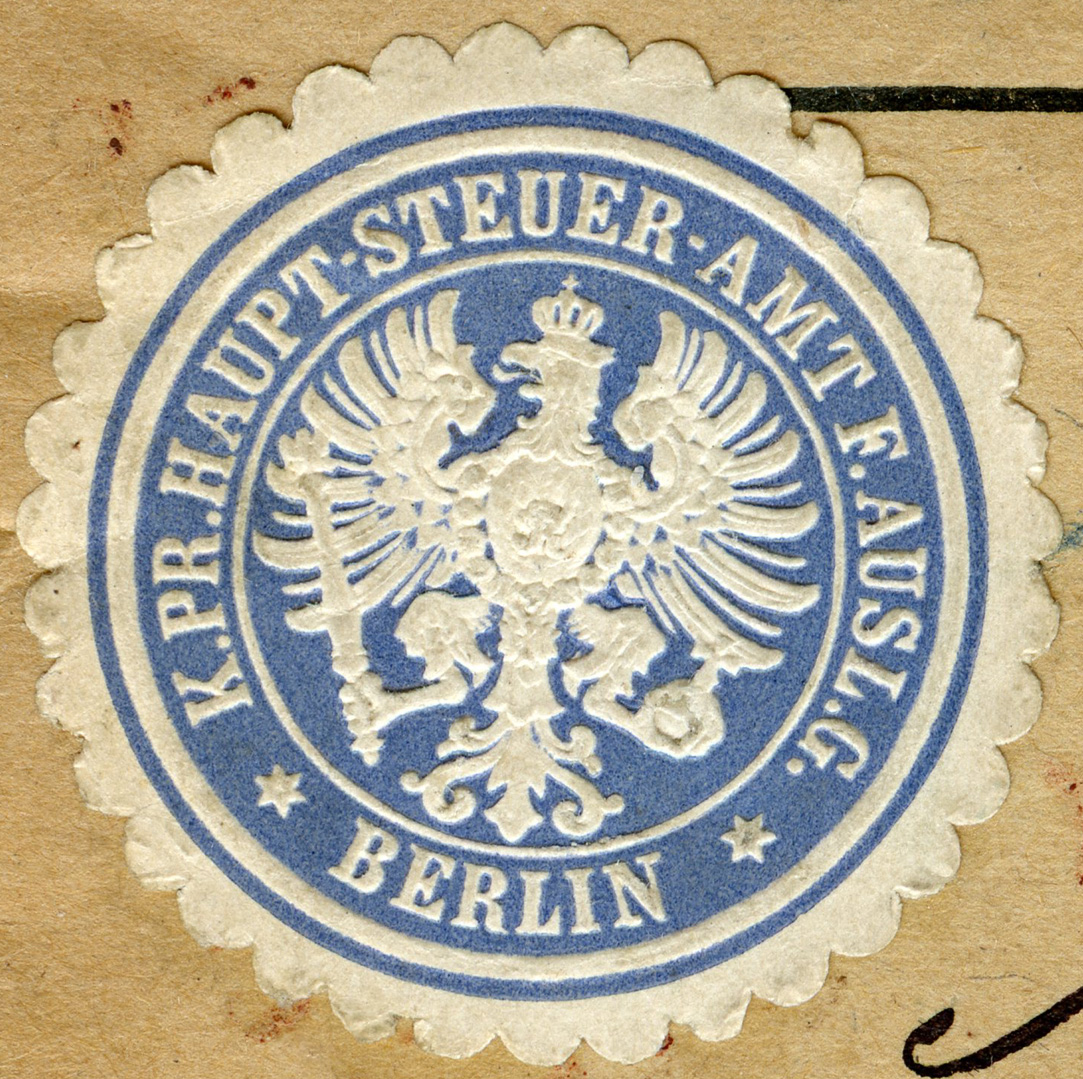

[Below: This is an interesting envelope commemorating the visit and departure of the German ship the Karlsruhe. It was postmarked on board the Karlsruhe on February 26, 1935 using a 1934 American postage stamp and sent to a Los Angeles address. Above the seal of the city of Los Angeles, in gold embossed text, it says:
'Farewell Capt C Lutjens
Officers And Crew Of The
Cruiser Karlsruhe
May You Have A Pleasant
Cruise'
The Karlsruhe was a light cruiser, which served from November 1929 to May 1938, and again from November 1939 to April 1940. It was a training vessel for naval cadets throughout the 1930s. During the Spanish Civil War it was used in patrols off the Spanish coast. In April 1940 the Karlsruhe took part in the invasion of Norway, landing troops successfully and then returning to Germany... but she would never make it. The Karlsruhe was struck by a torpedo on April 9th and was severely damaged, so much so that the ship had to be scuttled.]
[Below: Envelope reverse. This shows a March 1935 postmark from the San Pedro Naval Station.]
[Below: The Karlsruhe, in better days, before a war was forced upon Germany.]

[Below: Karlsruhe is also a city in Germany. In fact it is the third-largest city of the German state of Baden-Württemberg. It is located on the bank of the Rhine. Here is a cancel from Karlsruhe from July 8, 1937.]
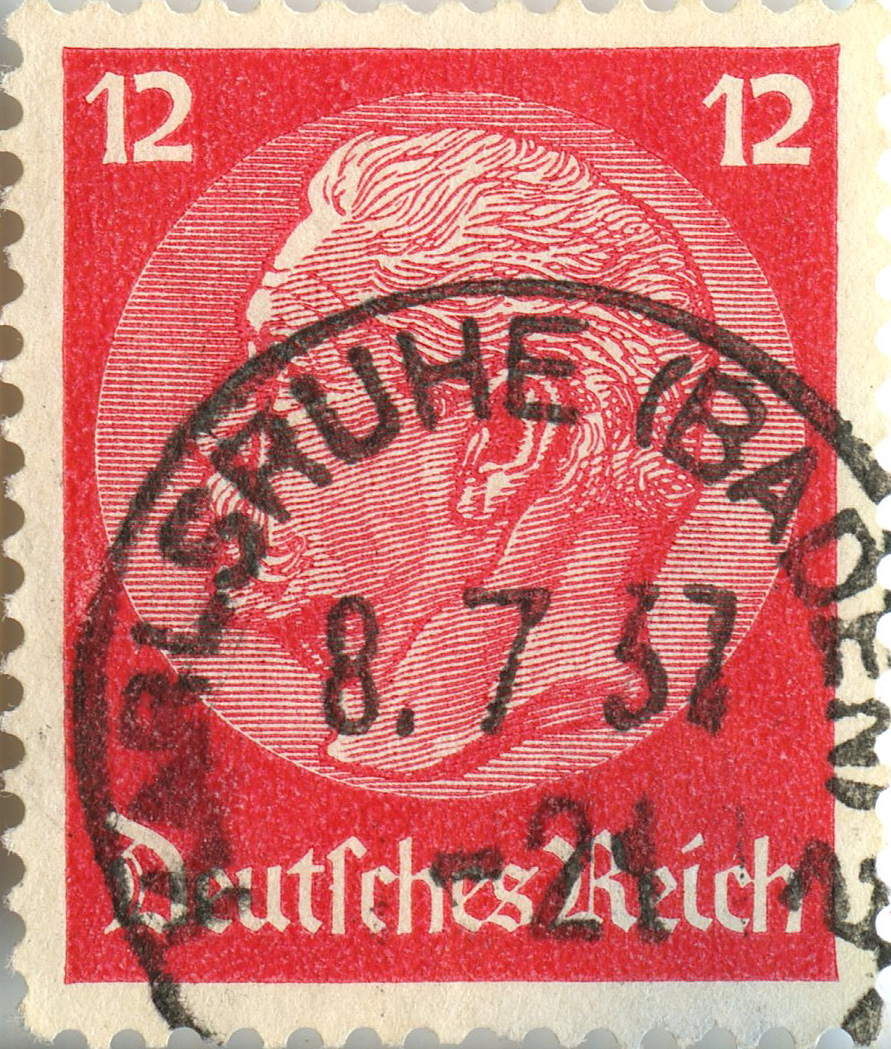

[Below: Here is an envelope from Braunschweig, postmarked November 29, 1941. The cancel is neat looking, it says: 'Besucht die Wehrmachts-ausstellung...' (Visit the Wehrmacht exhibition...).]
[Below: Close-up.]
